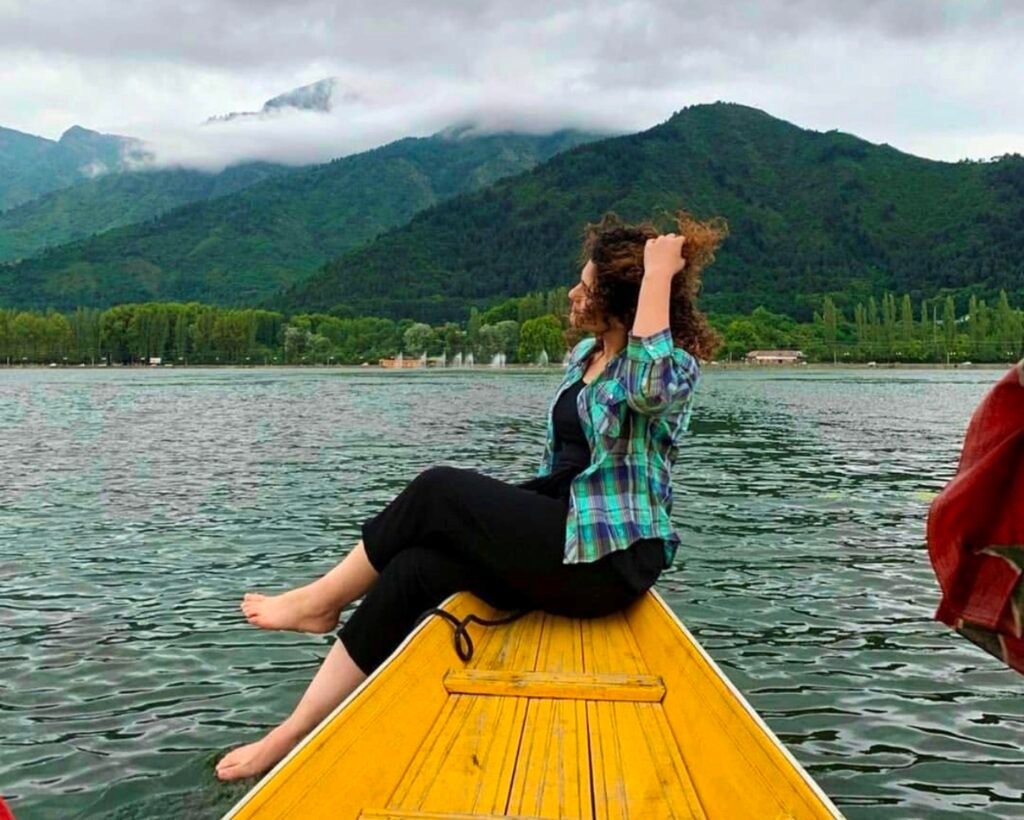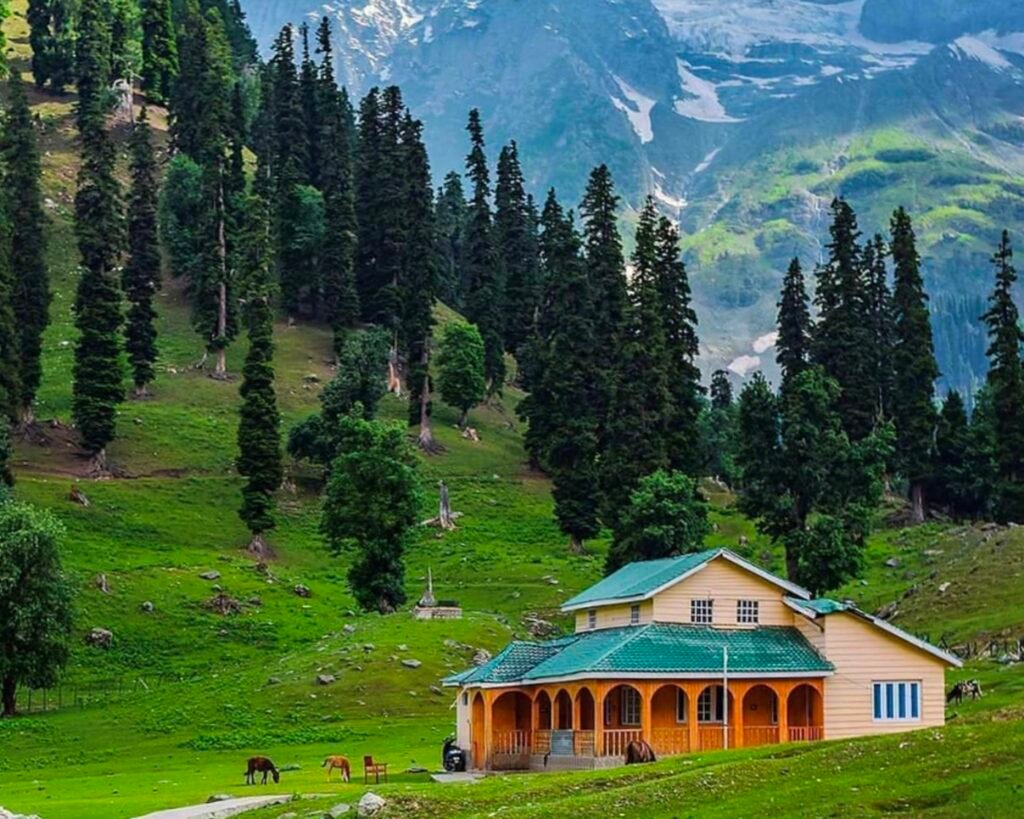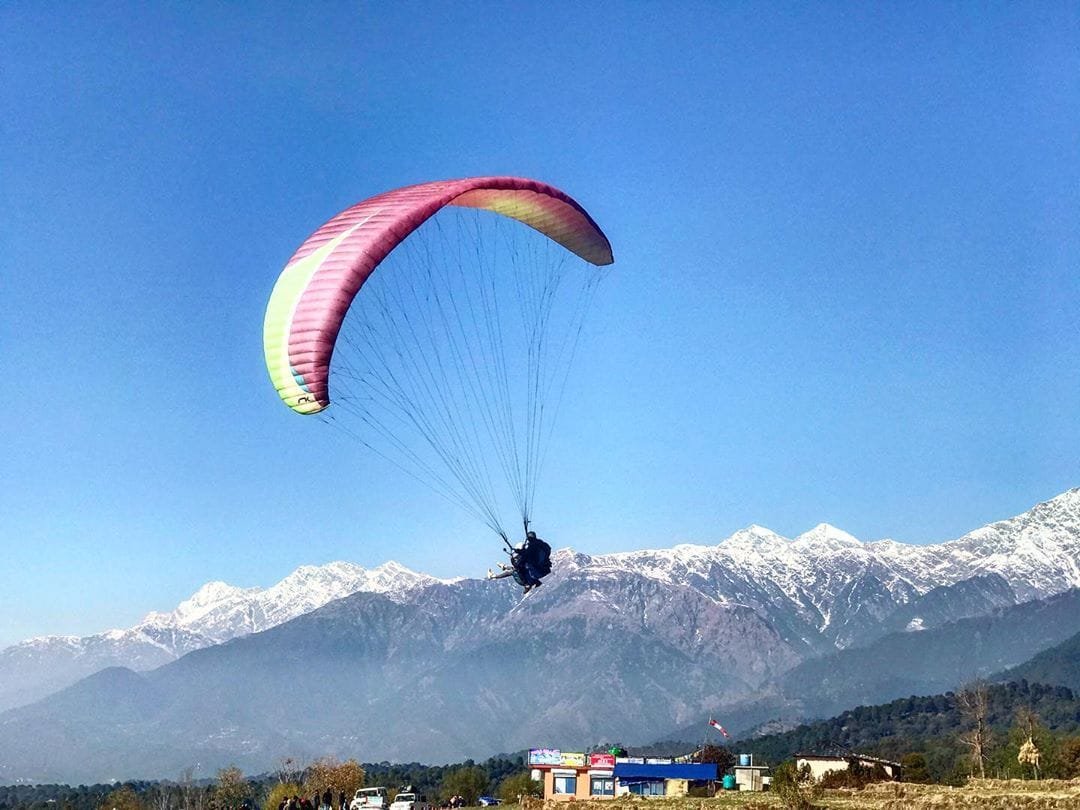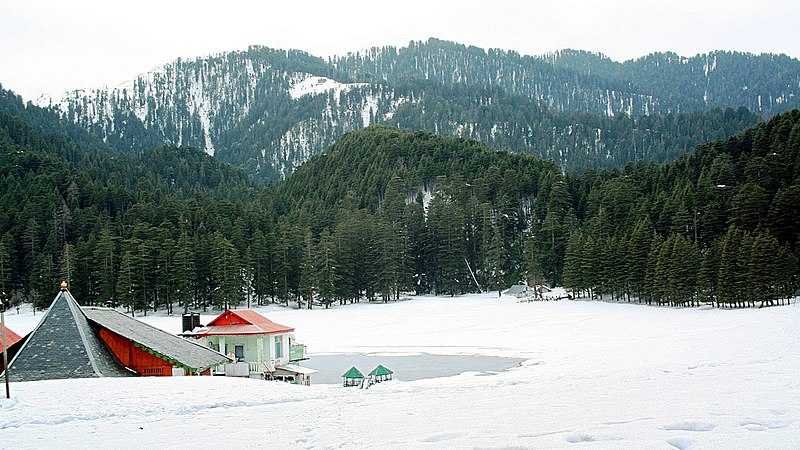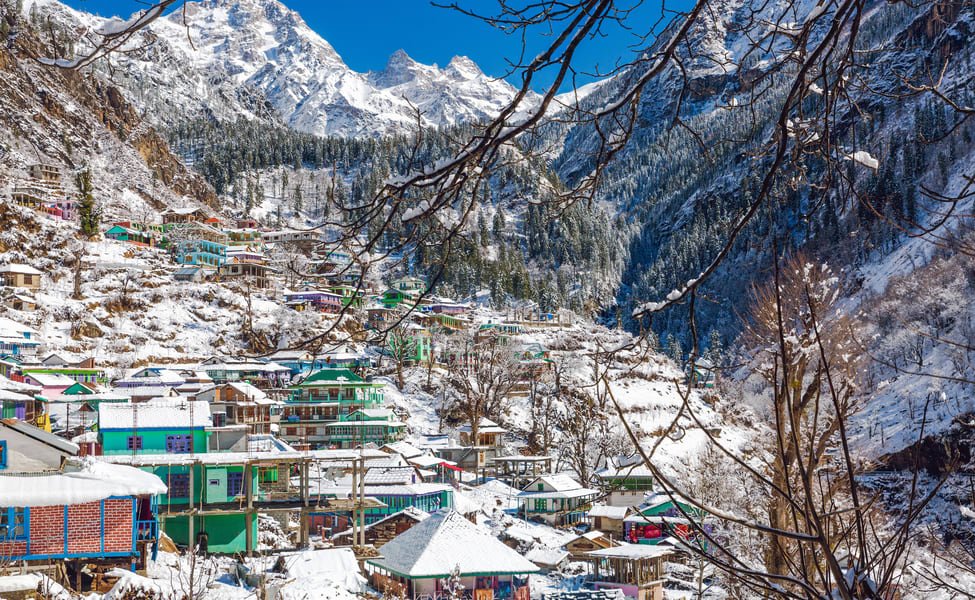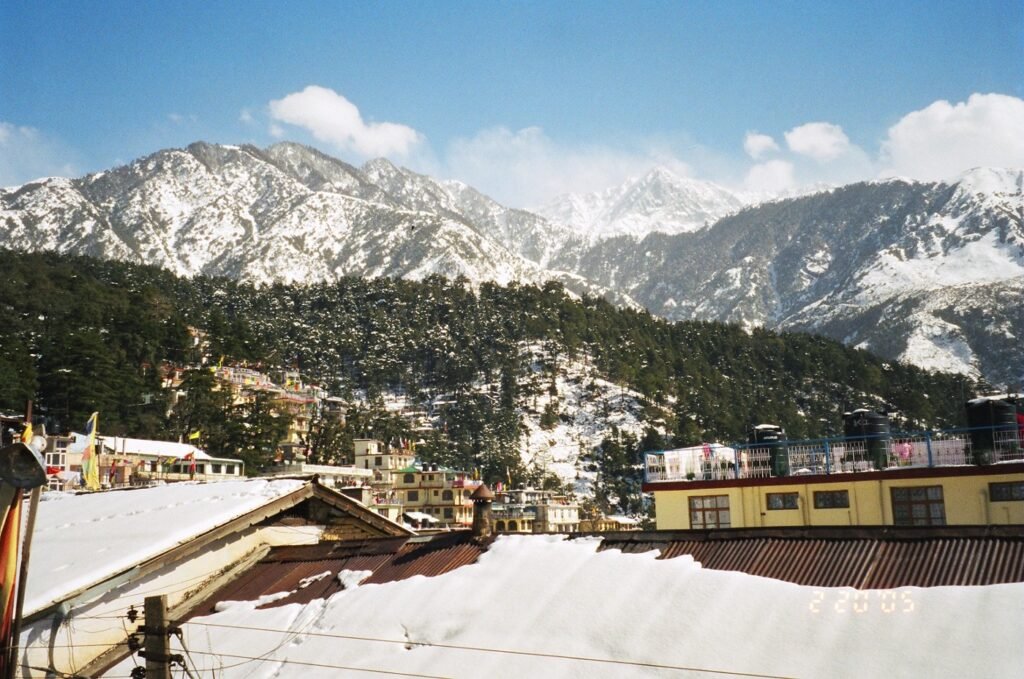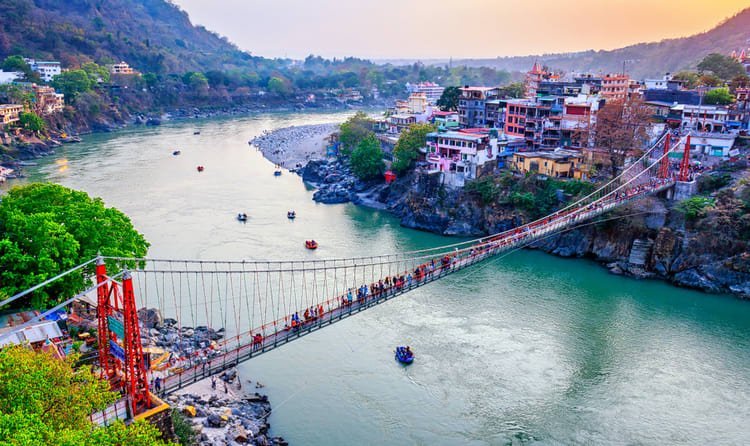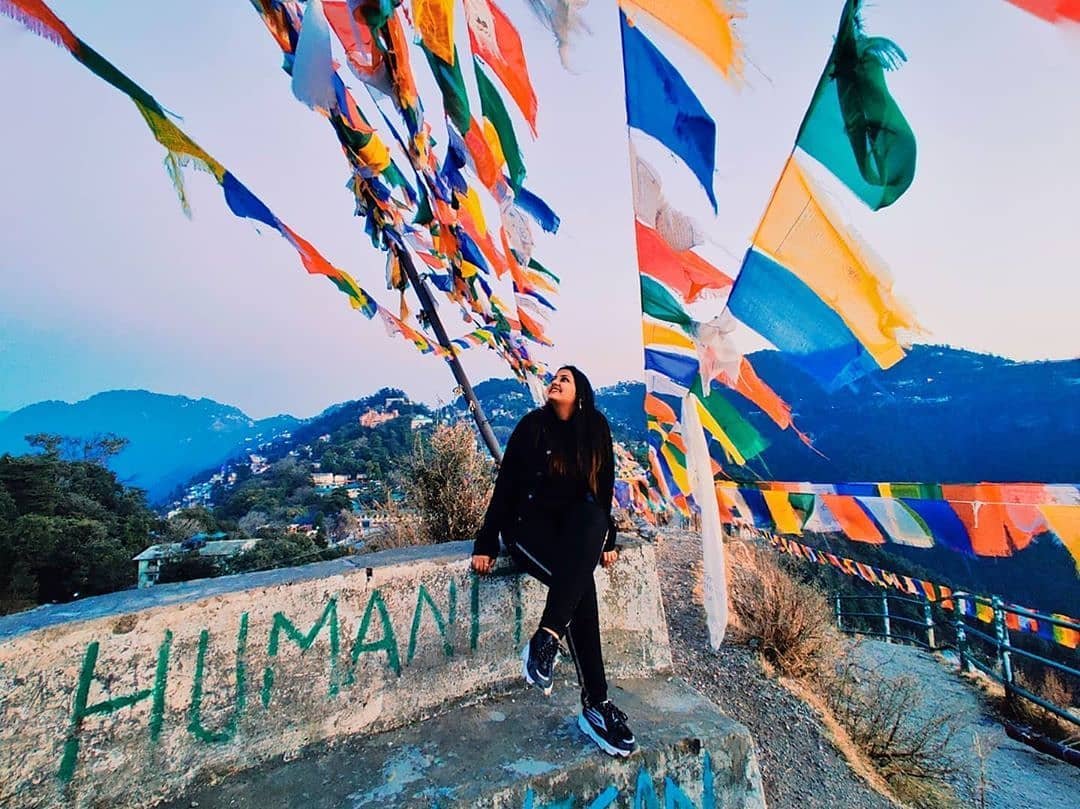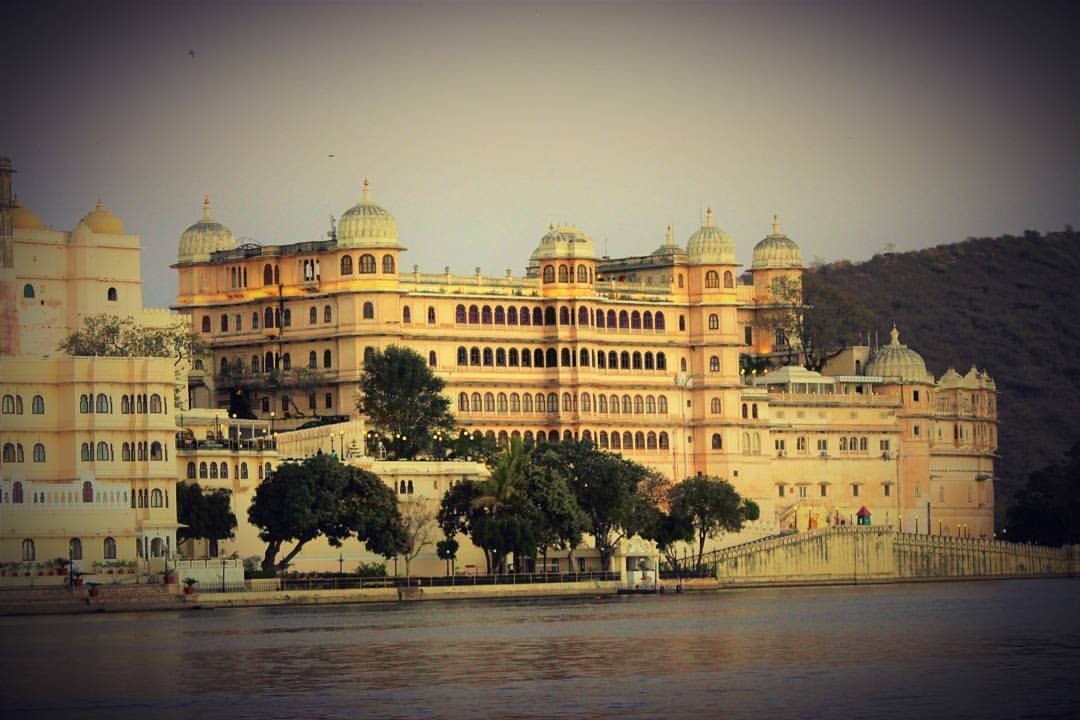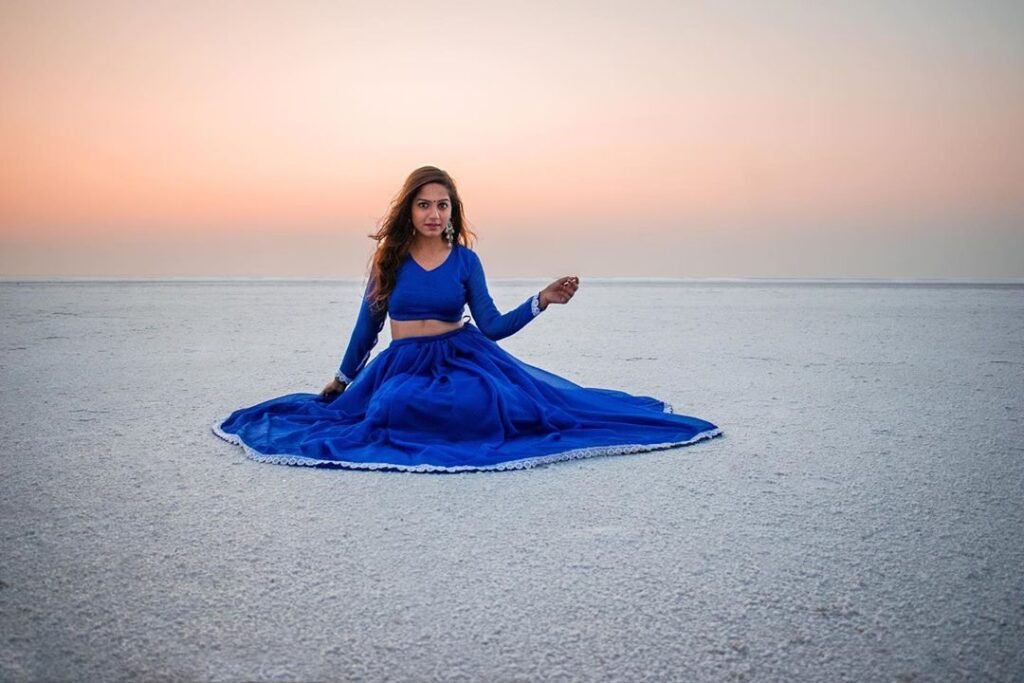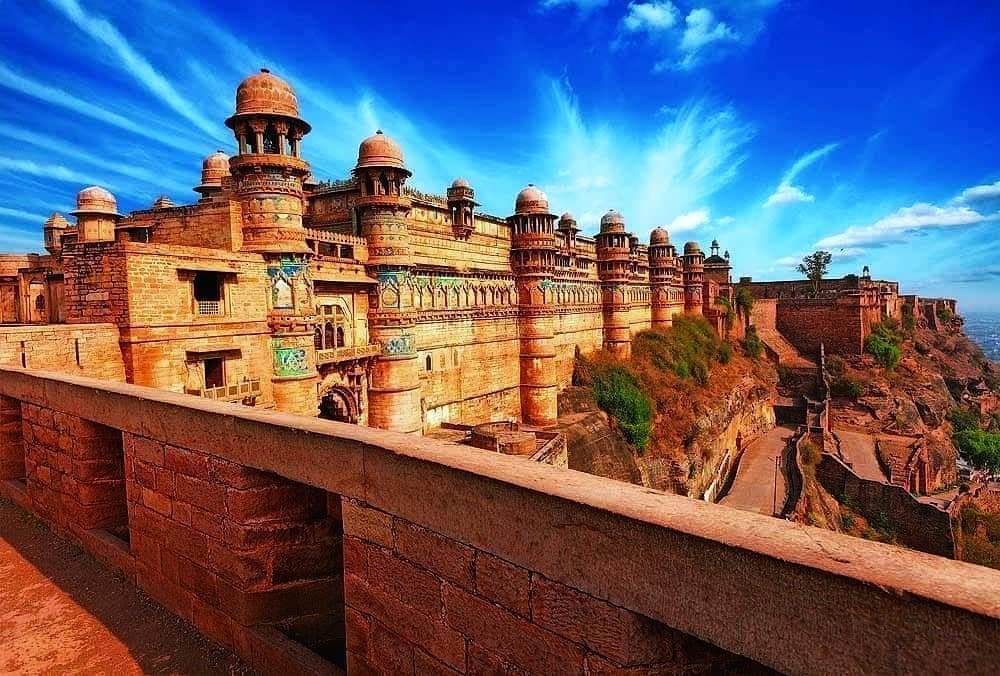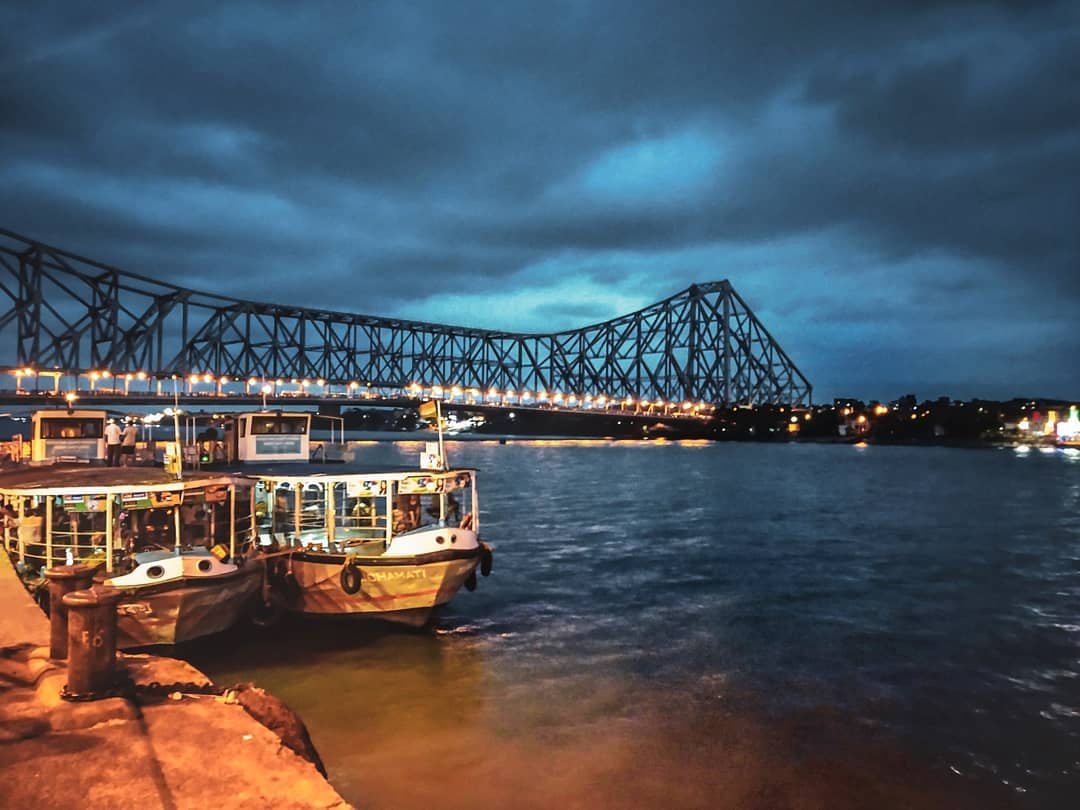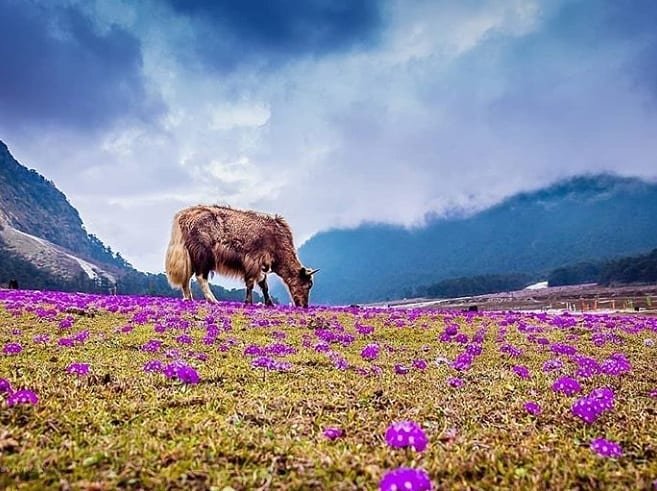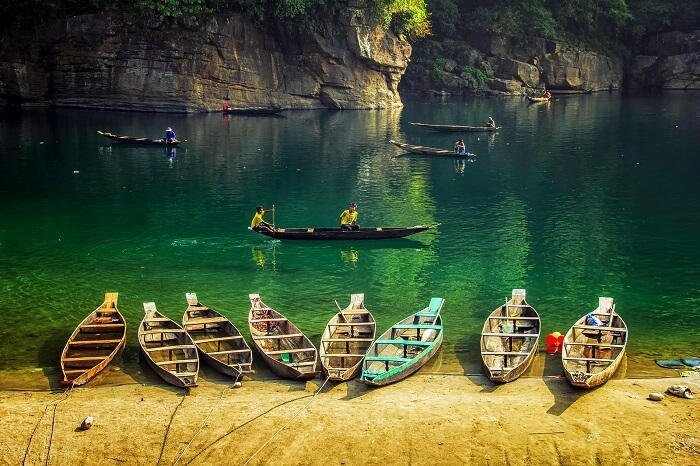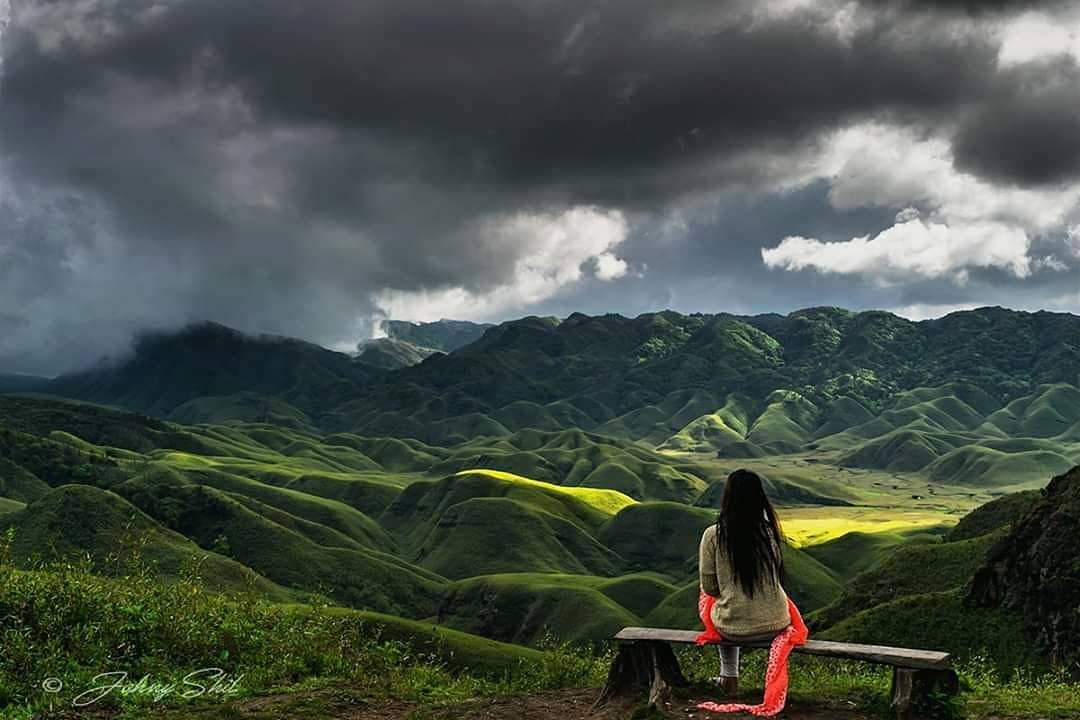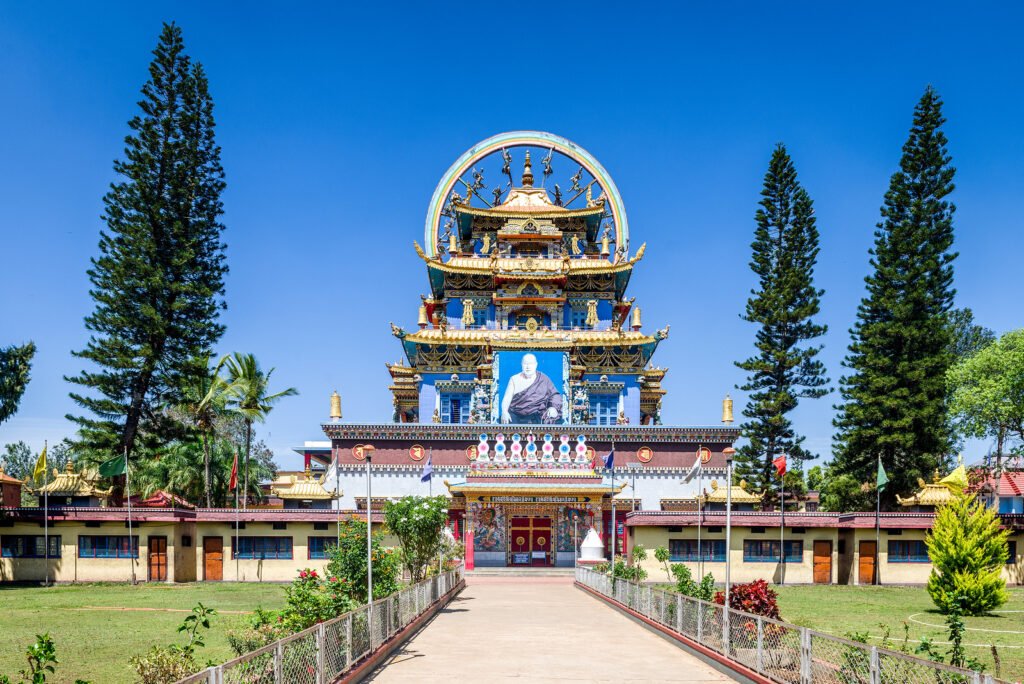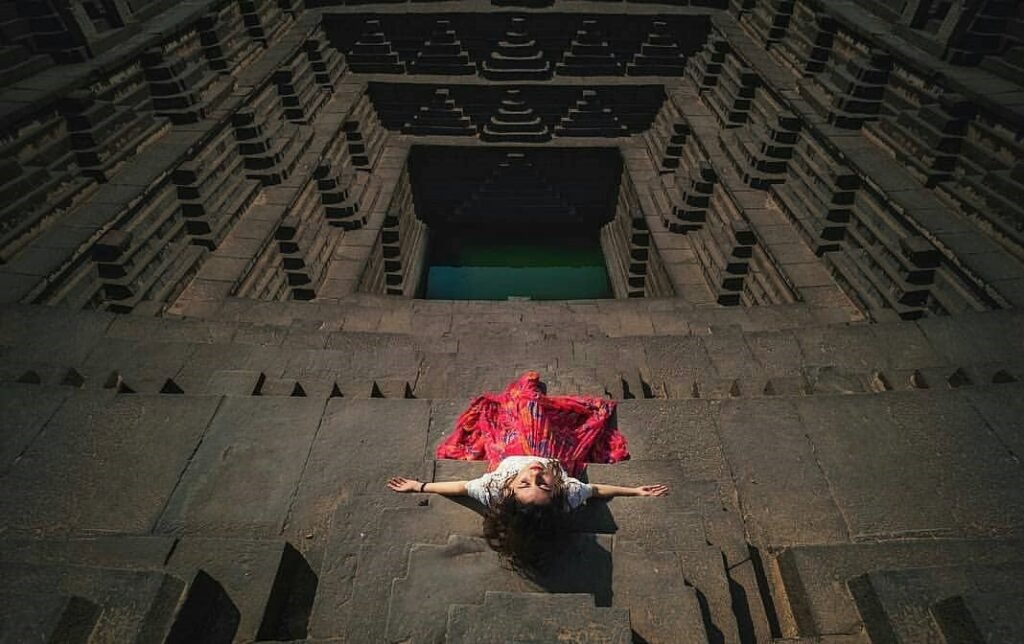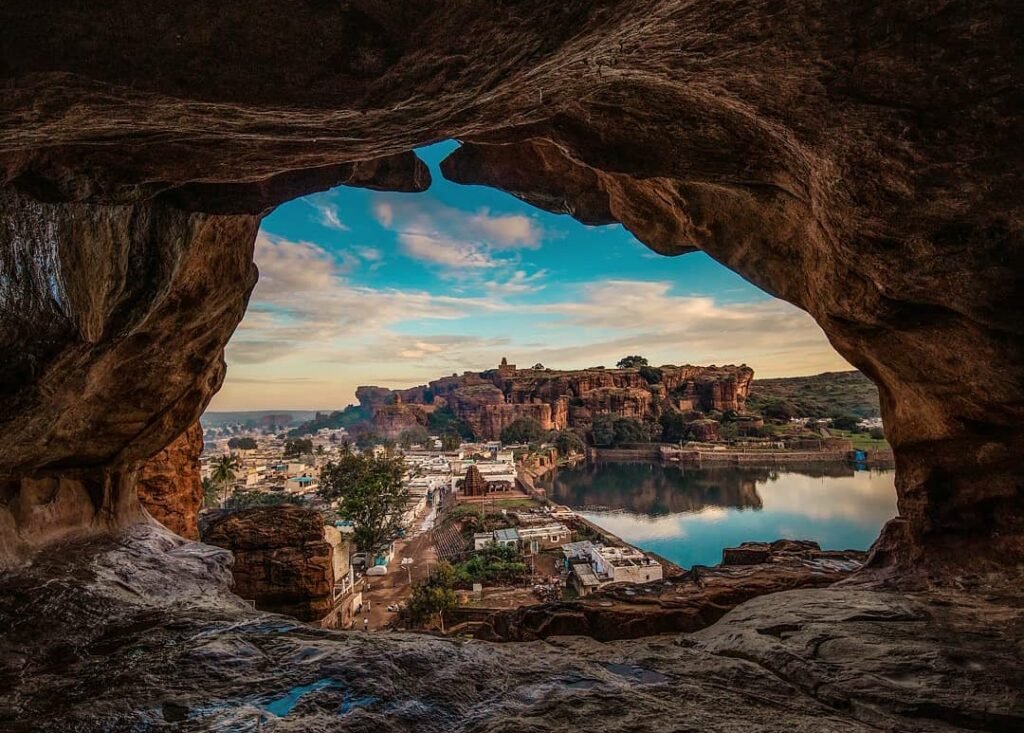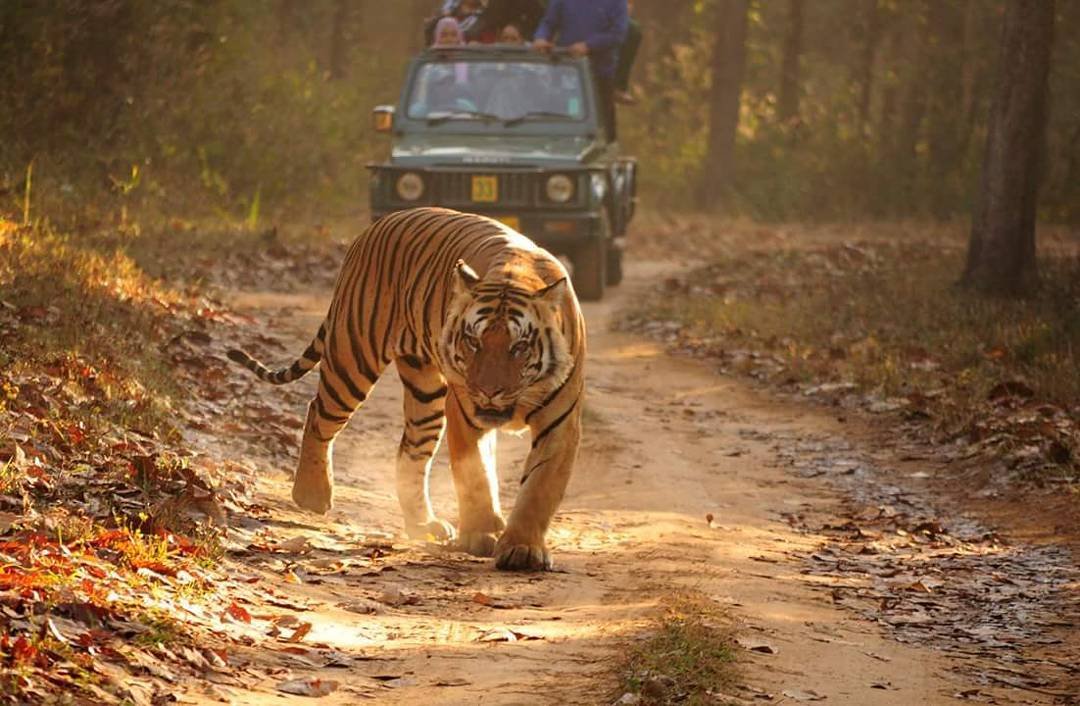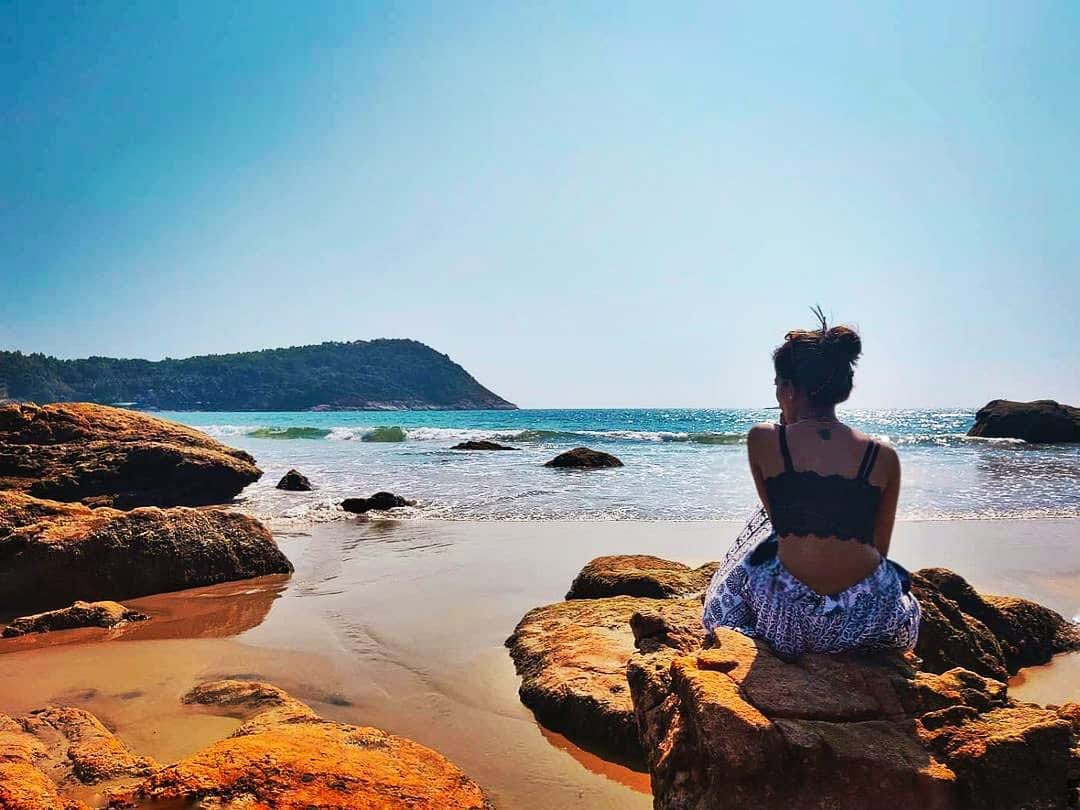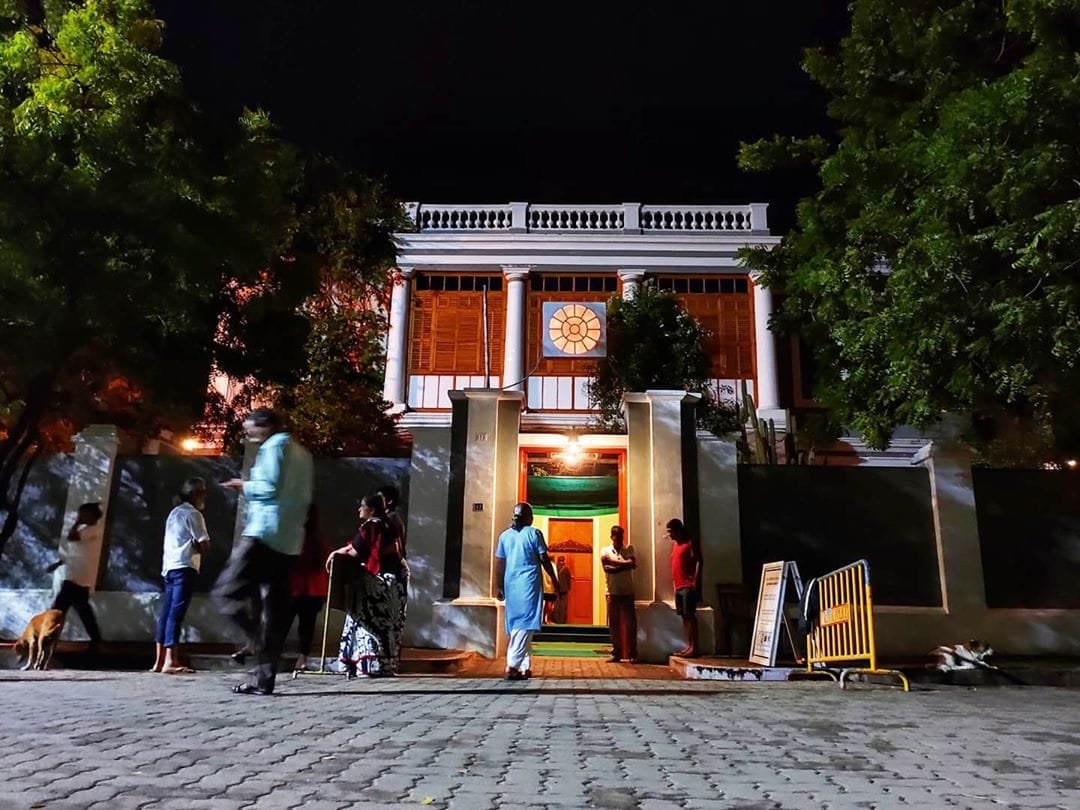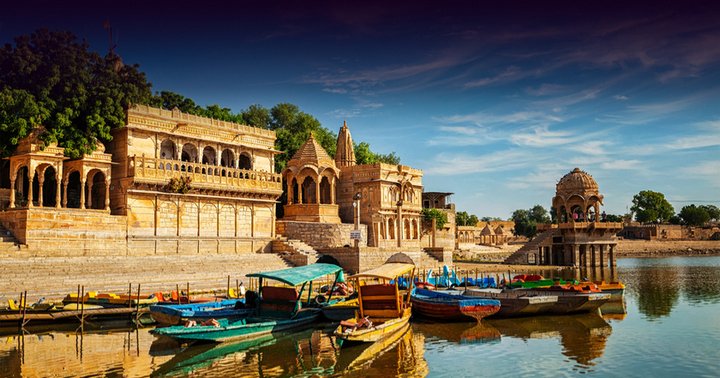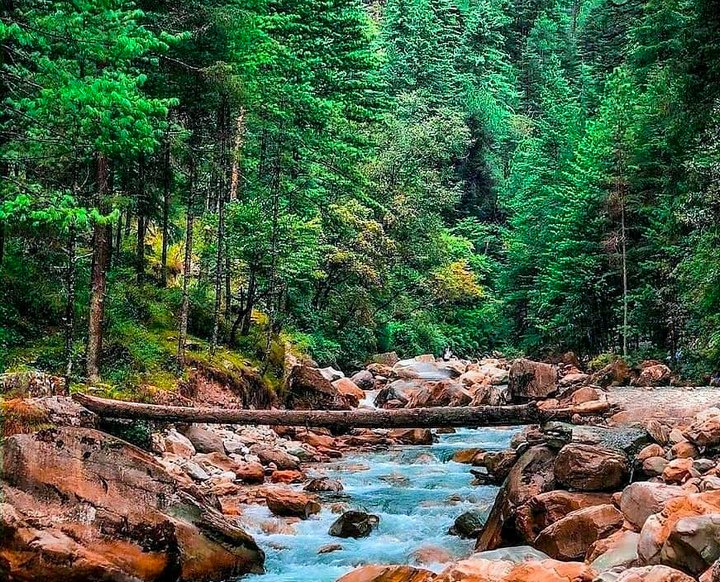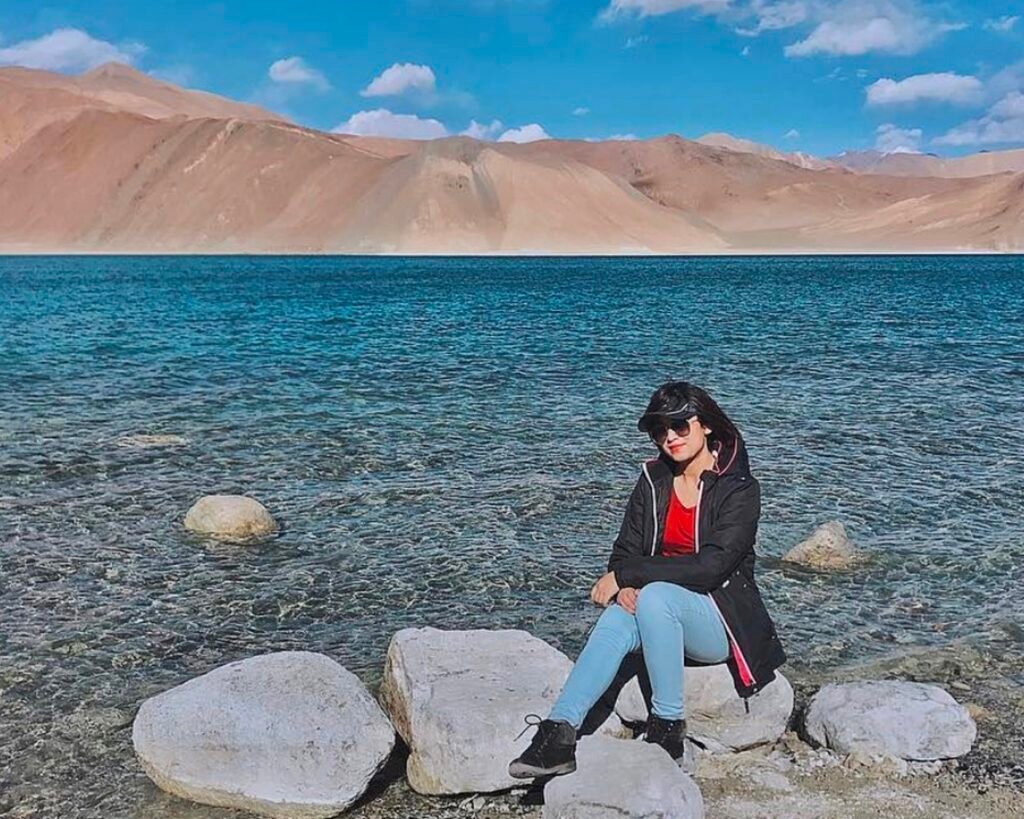The land of diversities. Whether it’s in culture, language, cuisine, celebrations, legacies, history, natural beauty – India’s got a multitude of them. It’s one of the oldest civilizations known and has aged well like fine wine.
Cradled between the natural frontiers of the Great Himalayas in the north and the sea links down south, India’s got everything that’d leave the traveller in you wonderstruck!
It a fun-packed experience that you’d never be able to stop jibber-jabbering about.
Out of the zillion beautiful places in India, HikerWolf has thoughtfully picked the 100 best places to visit in India. Here’s what we’ve got for you!
Ladakh
1. Ladakh
 The dream destination of India. One of the places that make it to the bucket list of every rider and traveler enthusiast.
The dream destination of India. One of the places that make it to the bucket list of every rider and traveler enthusiast.
Bordered by Tibet at east, Himachal to the South, and Jammu and Kashmir to the west, Ladakh is a Union territory of utmost importance. The roads, maintained by the Border Roads Organisation, extend above 1,800 km.
The high passes, crazy winding roads, trekking trails, festivals every month, snowflakes breezing on you, adventures for a lifetime there are endless reasons why this place is a must-visit land.
Attractions: Pangong Tso lake, magnetic hill, Hunder, Sangam at Nimmu, Leh palace, Turtuk, Khardung la pass, Lamayuru monastery
Interesting fact: Lakes such as Tso Moriri and Pangong become completely frozen during winters. The best part is that it turns into a natural ice-skating area and a mini festival for all the skaters out there!
2. Nubra Valley
 Famed to be different from any other Himalayan valley trip, Nubra valley offers you the rawest untouched experiences in Ladakh. The dry valley is bifurcated by the Shyok River, a tributary of the Indus. The Oasis vegetation that was born out of the river gifted the valley with the name “Orchard of Ladakh”. The Tibetan name of the Valley ‘Ldumra’ also translates to the same.
Famed to be different from any other Himalayan valley trip, Nubra valley offers you the rawest untouched experiences in Ladakh. The dry valley is bifurcated by the Shyok River, a tributary of the Indus. The Oasis vegetation that was born out of the river gifted the valley with the name “Orchard of Ladakh”. The Tibetan name of the Valley ‘Ldumra’ also translates to the same.
Regardless of the season chosen for the visit, Nubra is a magical experience. Winters make the land look like the surface of the moon and summers will present you with fine sand land with turquoise streams and springs.
Make sure you ride around the double-humped Bactrian camels found only in the Nubra valley in all of India. A camel ride chasing the sunsets in the cold desert should be on the must-visit list of every wanderlust!
Attractions: Khardung La Pass, Diskit Monastery, Panamik hot springs, Hunder sand dunes
Interesting fact: North of the valley lies the World’s second longest glacier outside polar regions – The Siachen Glaciers. It’s the world’s highest and coldest battlefield, and one of our natural frontiers.
Jammu
3. Srinagar
While exploring India, one place you can never go wrong with is the union territory Kashmir. Every nook and corner of it is adorned with unparalleled beauty.
Amidst this is the summer capital Srinagar at the banks of the Jhelum river. A trip across Srinagar gives you the most picture-perfect memories.
Famed for the gondola like Shikharas, rowed by the local Kashmiris across the crystal clear lakes. There’s a community of people who live by the lakes, and they add life to these picturesque landscapes.
You can wrap yourself in one of their exquisite Kashmiri shawls and munch onto some fresh apples while walking through the magic woven by Srinagar.
Attractions: Mughal-age gardens Nishat Bagh, Shalimar Bagh, and Chashm-E-Shahi Garden. Lal Chowk Market. Dal Lake with floating markets, Jama Masjid
Interesting fact: The Pir Pinjal railway tunnel or the Banihal railway tunnel is the longest in India and the fourth-longest railway line in Asia extending to 11,215 km.
4. Gulmarg

Few kilometers from the Line of Control, in the Baramulla district of Kashmir, is the alluring town of Gulmarg. The tall snow sprinkled mountains make it a popular skiing destination and are the place where one can let go off their monotonous routine and try new things. From a simple trout fishing experience to watching the valley from Asia’s highest Gondola cable car ride.
Situated amidst the Pir Panjal ranges, Gulmarg is a surprise in all seasons. The place that translates to “Meadow of Flowers” is a feast to the eyes during summers with icy glacial rivers and magical floral carpets.
The town is also home to one of the highest golf courses in India with its 18-hole golf course.
Attractions: Gulmarg Biosphere Reserve, Apharwat peak, Strawberry fields, Golf course, Seven springs, Ningle Nallah, Ferozepur Nallah, Alpather Lake
Interesting fact: Gulmarg is categorized as Asia’s 7th best skiing destination! Perfect for both amateurs and experts, the snow-laden expanse poses challenging runs through the world’s ninth highest peak – The Nanga Parbat.
5. Pahalgam
Pahalgam is a hill station that’s just too good to be true. Snuggled up comfortably within the mountainous terrains of Kashmir, the view from Pahalgam is unparalleled. At an altitude of above 2,500 meters, there’s a number of icy lakes complimenting the valley’s snow-covered alpines and dewy greens.
Pahalgam acts as a gateway to Betab and Aru valleys, which are home to a variety of native and exotic fauna. The Lidder river particularly is a popular spot for trout fishing and sees a large number of excited tourists flock in to watch the experts patiently get the catch of the day.
The trails also lead way to one of the most important pilgrimage sites in India – Amarnath Cave Temple. Embrace yourself for some breathtaking marvels blanketed in freezing ice.
Attractions: Sheshnag lake, Lidder amusement park, Mamal temple, Betaab Valley, Tullian Lake, Golf course, Baisaran Hills, Tarsar Lake, Kolahoi Glacier
Interesting fact: Pahalgam is the point from where the infamous Amarnath yatra to the holy cave shrine of Amarnath initiates. The cave temple is home to one of the unusually aesthetic idols – A frozen shiv-ling. Every year many pilgrims and trekkers follow the routes from Pahalgam to this temple.
Himachal Pradesh
6. Manali
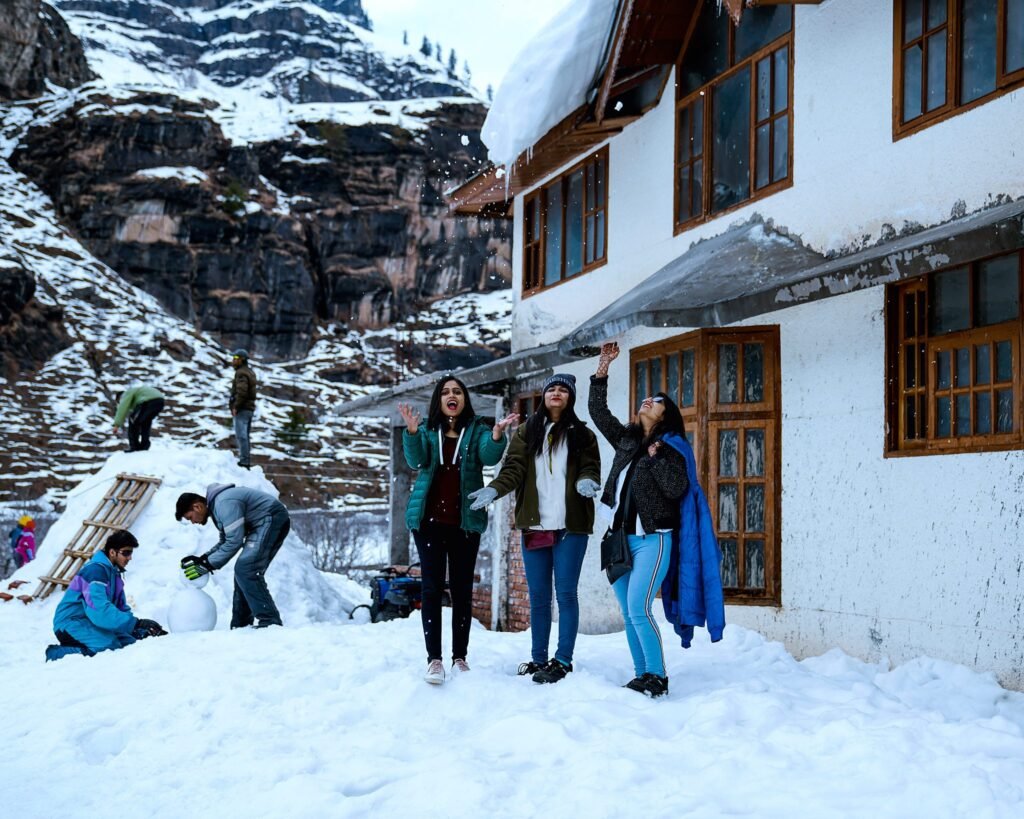
Every travel bug’s dream rite of passage. The high-altitude terrains of Manali sit on the icy Beas river.
The place has something for every kind of person. A soothing laidback spot for the ones who want to just relax and chill. Pumped up activities such as skiing and trekking for the adventurer. Paragliding and mountaineering for the experimentalist. Monuments and wooden villages for the history and architecture buff. Amazing flavourful cuisine for the foodie in all of us.
Manali has all endless options and is sure to steal a piece of your heart by being plain mesmerizing.
Attractions: Solang valley, Jogini falls, Bhrigu Lake, Mall Road, Hadimba temple, Vashisht hot water springs, Rohtang pass
Interesting fact: Manali is home to a differential culinary experience that’s quite special to them. A lot of their confectionery products are carefully crafted out of Yak milk and cheese.
Many Bakeries around the corner serve a wheel of cheese with dry apples and saffron which are also produced here in abundance.
7. Shimla
Greens freckled by snow, trails getting steeper with every step, wooden bridges wrapped with Tibetan prayer flags. Shimla is as pretty as a picture.
Named after the Goddess Shyamala who protects the hills, Shimla is declared as the capital city of Himachal Pradesh.
The favorite getaway spot of many is a jack of all trades. The charming colorful huts with the backdrop of the Himalayas, the constant hum of melodies, the sound of artisans carving wood are all part of the bewitching vibe.
Shimla also hosts South East Asia’s biggest Mountain biking race – The MTB Himalaya. So if you get a chance to explore Shimla on a bicycle, you’ve always got company from the bikers on the street who practice quite often.
Attractions: Kufri, Kipling’s home and Viceregal Lodge, The ridge, Jakhu Temple Hike, scandal point, Rothney Castle
Interesting fact: The only natural and the largest ice skating rink in India is in Shimla. Buckle up your skating shoes, you’re going to have a lot to boast about once you skate through this open-air rink.
8. Bir
Sure to get your adrenaline pumping, Bir Billing is the adventurer’s paradise. This humble little spot nestled in Himachal Pradesh secures a place among the top places in the world for paragliding and other aero sports.
Bir Billing has also become a center for eco-tourism and spiritual studies. Lying sprinkled around the valley are the Tibetan refugee settlements. The Buddhist monasteries and stupas are a must-visit when you come around these settlements.
Terrace layers of agriculture provide the population with the freshest of produce. Tea is farmed intensively here and collected at the infamous Tea factory, where every guest is welcomed to watch the entire manufacturing process.
Attractions: Palpung Sherabling Monastery, Sunset point, Bir tea factory, Deer park institute, Bir bazaar
Interesting fact: Bring out the child in you at Bir. A toy train that runs for about 160 km giving you the most picturesque view of Bir alongside the Dhauladhar ranges. It’s the most adorable and fun thing to experience here apart from the adventurous activities.
9. Khajjiar
A mystical hill station believed to be protected by the serpent god. Khajjiar is a valley so lush and soothing that it was tagged as the “Mini Switzerland of India”. The tiny saucer-shaped plateau is located less than 24 km from Dalhousie.
At an altitude of above 6,500 ft, the valley is cocooned by canopies of pine and deodar forests. Passing through gorges and rocky terrains, the trails get a lot easier around Khajjiar. In fact, it feels like a freshly laid soft green bed while you hike through it.
A walk through the infamous Kalatop Wildlife Sanctuary will explain why this beautiful strip of land is also called the Gulmarg of Himachal. Filled with such rich varieties of flora and fauna, this land of dainty foliage is sure to leave you bewitched.
Attractions: Khajjiar lake, Kalatop wildlife sanctuary, Khajji nag temple, Tibetan Handicrafts centre,
Interesting fact: A stone picked from here, is said to have contributed to erecting the stone sculpture of Berne, Switzerland. The connecting roots of Khajjiar with the Swiss go back in time when it was officially baptized by the Swiss Ambassador in July 1992.
10. Spiti valley
If the singing bowl could look like a place, the cold deserts of Spiti would be it. Located at the north-eastern part of Himachal Pradesh, the name Spiti translates to “The middle land”.
This is because it lies between Tibet and India.
A lot of attributes on culture to language is a Tibetan-Indo blend influence.
Why visit Spiti? To witness the majestic mountain ranges humbly cowering amidst cotton clouds, and the quaint villages singing with the hum of the “Om Mani Padme hum” flags.
Discover your path around the hidden meadows and springs.
Attractions: Chandratal Lake, Key Monastery, Kunzum Pass, Pin Valley National Park, Suraj Tal Lake, Dhankar Monastery
Interesting fact: Rudyard Kipling described this place as “a place where the gods live”.
11. Tosh
Tosh is a paradoxical hamlet scattered around Himachal Pradesh. It is cocooned within a hill in the Parvathi valley and is easily distinguishable because of its welcoming sight of Apple orchards and wooden houses.
It’s considered a hidden hippie soul within the traditional Pahadi setup. That is also why Tosh is more than what falls on one’s eyes.
If there’s warm homely Siddu being cooked in ghee and served with apple-sauce on one side, there’s psychedelic music and trippy posters right on the other side.
So be ready for a multifaceted Pahadi experience at Tosh.
Attractions: Temple of Barshaini, The fairy forest, Parvathi valley, Hot springs, Cafe hopping, Tosh mandir
Interesting fact: The festive party life is undoubtedly the most fun activity in Tosh. One such celebration is the Namaste festival hosted by the Israelis living in Tosh.
12. Mcleodganj
Fondly known as “Little Lhasa”, Mcleodganj welcomes travelers with the untouched essence of British and Tibetan history.
Declared as the summer capital of India by Lord Elgin, this beautiful piece of land lies in the Kangra district of Dharamshala.
At an altitude of 2,082 meters, the suburbs of Mcleodganj offers a spellbinding view of the Dhauladhar ranges. Just around the corners are also the colonial establishments of tea houses serving the warmest cup of chai directly from the fields.
Attractions: Bhagsu waterfalls, Triund, Dalai Lama’s abode of worship Tsug La Khang, Tibetan performing arts institute. Kangra Fort, tea plantations of Kangra valley
Interesting fact: A lot of eateries around here offer not just delicious food, but also classes on how to cook Authentic Tibetan cuisine. Try your hand at kneading some flavourful bread and momos!
13. Kullu Valley
Lying 1200 meters above sea level in the Himachal valley is the picturesque land of Kullu. The valley is the confluence point of two beautiful rivers – Beas and Parvathi. These chilling waters of Kullu will get your adrenaline pumping with adventurous water sports such as rafting, canoeing, kayaking.
Crowned as the “Valley of God’s”, it is highly spiritual and religious. Mani stones found at almost every nook and cranny, and festivals of the gods celebrated by basking in all the glory!
Attractions: The Great Himalayan National park, Rupi palace, Friendship peak, Pandoh Dam, Bhuntar, Bhrigu Lake.
Interesting fact: Kullu is world-famous for their Dussehra festivities. It had secured the position of the Largest folk dance performance, with 9892 dancers, in the Guinness Book of World records (2015).
14. Manikaran
Located in the Parvati valley amidst the Parvati river, this little town is quite a famous tourist destination and a common halting point during Kullu-Manali exploration.
Nestled at an altitude of 1,82 meters above sea level, Manikaran is said to be one of the spiritually enlightened places. It also happens to be nature’s best exhibits.
With hot water springs that never run out of speculations and stories on how the water remains above the boiling point even to date, it is one of the most interesting natural wonders.
Right above the steam of the hot spring is the beige shaded gurdwara and the majestic domed temples.
A donation made to these Gods is believed to bring goodwill to you by bringing in your drowned or lost goods floating back to you.
A good share of the river water is used by the villagers, and there is always bustling activity around here.
Attractions: Manikaran Sahib, Hot springs, Lord Shiva temple, Parvati river, Harinder mountains, Lord Ramachandra Temple, Kulant Pith, Kheerganga, Chalal
Interesting fact: Tie up the rice in a muslin bag and throw it in the hot waters. You’d have your meal cooked in no time! The hot water spring which is said to be radioactive and contain elements of sulfur is an important component of the villagers’ daily life.
Even today, there are many people who cook their food by keeping it immersed in the spring and it’s a sight you’d get to see nowhere else.
15. Kasol
A quaint little hamlet in Kullu district of Himachal Pradesh. The village starts at the confluence point of River Parvathi and Beas and is just as peaceful as the flooring rivers.
Earlier an untouched valley of Kullu, the spot struck off with a lot of backpackers and hippies because of its unruffled natural beauty. Emerald coniferous belts and snow-capped mountains. Kasol is pitched perfectly around the most exciting trekking trails.
Attractions: Parvathi River, Rock climbing, Rafting, Trek to Kheerganga, drive down to Tosh and Malana
Interesting fact: Don’t be confused when you see a lot of signboards written in the Hebrew language. You’ve come to Kasol itself, Mini Israel. Inhabited by many Israelis, Kasol gives you a sneak peek at their culture, cuisine, and artistry.
16. Tirthan Valley
A secluded getaway perched at an altitude of 1600 meters above sea level. Tirthan valley is a destination that feels like a fresh breath of air.
Located in the Kullu district of Himachal Pradesh, the valley lies amidst the icy glacial Tirthan river and is the gateway to the Great Himalayan National Park.
While not many travelers are familiar with this valley, it sure is an experience like no other. Exploring the way through the alpines and snow-laden terrains, watching exotic migratory birds and wildlife, villages that look like they’ve been carved out of wood. Ideal for the experimental and adventurous backpacker with an uncharted plan for an offbeat destination.
Attractions: Serolsar lake, Tirthan river, Jibhi, Chhoie waterfall, Trout Angling, Day hiking, Chehni Kothi
Interesting fact: Tirthan valley is beautiful in every aspect. A shoal of rainbow trout can be found in Gushaini region of Tirthan valley. You can catch your own meal by going trout fishing and get it cooked the local Pahadi way.
17. Dalhousie
Nestled across five hills near the Dhauladhar mountain ranges, Dalhousie is a hill station adorned with towering Pine and oak valleys.
It remains in mint condition despite the number of tourists who come by here every other day.
Located at an elevation of 1,970 meters above sea level, it is a surprising blend of everything a wanderlust would look for!
Established during the British Empire in 1854, there’s a historical touch in everything here. From the Victorian architecture of the churches, peaceful strolls around lush greens, trekking trails of lofty peaks, adventure water sports, and the charm of contemporary art.
Attractions: Khajjiar, Paanch pulla, Chamera lake, Satdhara falls, Dainkund, Ganji Pahari, Tibetan Handicrafts market
Interesting fact: Potato development station at Ahla is one of the differential and fun experiences in Dalhousie. Explore the farming techniques and grab onto some freshly plucked potatoes and fries.
18. Kangra Valley
A popular tourist destination that’s celebrated as Devbhumi or “The land of gods”. The valley that decorates the foothills of Dhauladhar ranges with emerald patches and the gushing Beas river, is beyond picture-perfect.
Kangra valley is also known to be the realm for spiritual studies. Tibetan refugees who found their homes within the peaceful valleys of Kangra, contributed immensely to the culture. Monasteries and Tibetan institutes are all part of this cultural heritage that was developed in the valley and can be found abundantly.
Against the benevolent mountain ranges of the Himalayas, find solace in this quaint valley.
Attractions: Kangra fort, Kareri lake, Jwaladevi temple, Andretta, Bhagsu waterfall, Kangra art museum, Triund, Masrur Rock cut temple, Indrahar pass, Baijnath temple
Interesting fact: The name Kangra came about with the mix of two words Kaan (ear) + gaddha (create/mold). It was named so to honour the plastic surgeons who provided their services to royals and warriors who had their facial features deformed during war
Punjab
19. Amritsar
The first few things that run to your mind instantly when you hear Amritsar would probably be – Golden Temple and Amritsari Kulcha. That’s pretty much the sneak peek into what this beautiful city has onboard for the wanderlusts.
Amritsar is a city in Punjab and the holiest city in Sikhism. With an abundance of sacred sites and revered rituals, it’s a place with an unmissable aura. The name of the city itself was derived from the Amrit Sarovar (Pool of nectar) amidst which the legendary Golden Temple is located.
The city is also a halting point for all food lovers! Nobody leaves this city with an empty stomach, there’s always good food in stock and that’s one thing Amritsar can vouch for without hesitance.
Attractions: Golden Temple, Jalianwalla Bagh, Hall Bazaar, Partition Museum, Wagah Border ceremony
Interesting fact: Largest free kitchen in the entire world! Langar Prasad offered at the Golden Temple is one of the most delicious meals offered free of cost to every visitor.
Uttarakhand
20. Lansdowne
Among the many hill stations in Uttarakhand, the most tranquil one, without a doubt would be Lansdowne. This eco-tourism spot has one of the cleanest and motorable roads, wrapped within layers of greenery and milky fog.
Tracing its roots to the colonial influence and to the present time command office of the Garhwal Rifles of The Indian Army, Lansdowne has a systematic and historical touch to it. Even the name Lansdowne was taken from the viceroy of India (1888-1894) Lord Lansdowne.
Attractions: Bhulla Tal, Tip n Top point, St. John’s Church, Garhwali museum, Bhim pakora
Interesting fact: Trekking trails covered with snow are one of the highlights of Lansdowne. A climb that’s moderately easy, it’s perfect for beginners to get hooked to trekking.
21. Auli
A picturesque ski resort and hill station perched in Uttarakhand. Quiet the beauty surrounded by coniferous forests along with the backdrop of Nanda Devi and Nar Parvat mountains.
An accessible spot throughout the year, the place is beautiful no matter what the season is. Blanketed in thick snow during winters, and glacial rivers around alpine trees and flowers during summers.
The place is beyond beautiful and you get to witness every bit of it through the long cable car links. This also includes a view of the world’s highest man-made lake!
Attractions: Skiing, Ropeway, Chattrakund Lake, Joshimath, Nanda Devi national park, Gurso bugyal, Keanu bugyal, Trishul peak
Interesting fact: The second longest and highest ropeway ride in Asia can be taken at the hills of Auli. Connected to Joshimath over a distance of 4 km and an altitude of above 3000 meters above sea level, the Gondola ride is sure to steal your breath away.
22. Chopta
Chopta is a humble region of settlement with meadows and forests located in Uttarakhand.
The place which is an important part of the Kedarnath wildlife sanctuary is easily accessible even though it’s considered an offbeat destination. At an altitude of 2,680 meters, Chopta acts as the base point for two infamous trekking spots – Tungnath and Chandrashila treks.
It’s one among the untouched tourist spots where nature remains with all its raw beauty. From here you’d get a view of the Himalayan ranges such as the Trishul, Nanda Devi, and Chaukhamba. Among the most peaceful go-to spots with zero hustle and infinite awe-striking sights.
Attractions: Tungnath, Deoria Tal, Chandrashila, Ukhimath, Kanchula Korak Musk Deer Sanctuary, Madhyamaheshwar Mandir, Rohini Bugyal, Dugalbitta, Kalimath temple, Sari Village
Interesting fact: Chopta is called the ‘Mini Switzerland’ or ‘Switzerland of the East’ with its rich floral carpets and snow sprinkled views. Here you’d always be either surrounded by deodar and rhododendron forests or would be stepping into a wonderland covered in snow.
23. Devprayag
More than just the confluence of two rivers, Devprayag is a town that needs to be visited to understand how deep-rooted and protected Indian culture and traditions are.
Stories weaved through the origin of the Ganga from the valley, passing around like an heirloom. Nestled in the Tehri Garhwal district of Uttarakhand, Devprayag is the holy seat of the pundits of Badrinath Dham. For this reason along with many others, the town is an important pilgrimage site for the Hindus.
Religion set aside, the town also has a range of adventurous activities. You’d have the time of your life going rafting and camping around the confluence of two rivers that stretch endlessly.
At an elevation of 830 meters above sea level, you could also experience Cliff jumping, rappelling, mountaineering, bungee jumping, and so on.
If the celestial nature of the town does not convince you to pack your bags to Devprayag, these thrilling adventures are sure to do the work.
Attractions: Confluence Of Alaknanda And Bhagirathi River, Raghunathji Temple, Chandrabadani Temple, Dashrathshila, Kyunkaleshwar Mahadev Temple, Suspension Bridges, Teen Dhara
Interesting fact: Mythology has it that, to repent the murder of Ravana, Lord Ram had meditated at the heights of Devprayag. The name of the town itself which translates to “Godly Confluence”, is said to wash off any kind of sin.
24. Dehradun
Among the oldest Indian cities with a tinge of colonial influence still lingering in the air. Dehradun, sandwiched between the Himalayan and Shivalik mountain ranges, is a sight to behold.
Dehradun means a camp between the valleys, and that’s exactly what the town located at 435 metres above sea level is all about.
Covered by lofty snow-covered mountains, the town humbly stands as a traveller’s paradise.
Acting as a gateway to the hill stations of Mussoorie, the pleasant terrains of Dehradun has lots to offer. The Ghanta Ghar clock at its heart extends to bazaars, golden-domed temples, Buddhist monasteries, and brick-cement houses.
Along with this are contributions left behind by the Britishers such as the Doon School, Wadia Institute of Himalayan Studies, and so on.
Attractions: Sahastradhara, Tiger falls, Robbers cave, Tapkeshwar temple, Mindrolling Monastery, Forest research institute, Tapovan, Lacchiwala, Malai deer park
Interesting fact: A cave that used to be quite mysterious earlier and a thrilling exploration spot today – Robbers caves. It is said that no particular end-point has ever been found in these caves as it was earlier used as a pathway for robbers to transport their loot through. Trek up to these dark caves and explore through hidden gorges, gushing waterfalls, and disappearing rivers.
25. Mussoorie
A very common location seen in many Bollywood songs and movies – the hill station of Mussoorie. Located in Uttarakhand at the foothills of the snow-capped Himalayas, this quaint little town is sure to sweep you off your feet.
A major cultural and eco-tourism center, Mussoorie is an expanse of magical sights arranged across a horseshoe ridge. At an altitude of above 2000 meters above sea level, there’s an unfiltered view of the majestic Himalayas and the Garhwal region frosted with mist.
The mountains here holler out to adventure sports enthusiasts and are a bustling spot because of their picture-perfect scenery.
Mussoorie was earlier known as Mansoori, named after a shrub that exclusively grew around this region. Even though the name went through westernization, many localities still stick to the name they had lovingly given to this town.
Attractions: Kempty falls, Lake Most, Lal Tibba scenic point, gun hill point, Benog wildlife sanctuary, mall road, camel’s back road, Happy valley, Mussoorie adventure park
Interesting fact: The hill station that was an exclusive spot for the Britishers and elite Indians, had a unique way of telling time.
Everyday by mid-day, a canon would be fired from the highest point of Gunhill. Depending on the gunshots, everyone would adjust their watches and know the hour of the day.
26. Nainital
Literally described as an “Eye shaped lake”, Nainital is a mesmerizing Himalayan resort town in the Kumaon region of Uttarakhand.
The popular boating site is located at an elevation of above 2,000m. Nainital is one of the seven lakes that adorn Sattal town, which earned it the name of Lake district of India.
It was a common retreat spot for the Britishers during the colonial period, and the subtlety in Nainital’s beauty effortlessly steals people’s hearts even today.
The major source of economy and livelihood here depends on the tourism industry, and so no guest who comes here goes back without a memory worth cherishing. View all the surprises the lake town holds, through a cable car running to the Snow View observation point.
Attractions: Jeolikot, Lake Naini, Naini Peak, Snow View point, Eco cave gardens, St. John in the Wilderness, Mall road, Governor’s house, Jim Corbett National park
Interesting fact: The town is said to receive rainfall more frequently than any other place in Uttarakhand. The locals say that they have a personal rain cloud right above their heads which will shower upon them regardless of how the weather is in any other part of the country.
27. Kedarkantha
Kedarkantha is a mountain peak of the great Himalayas at an elevation of 12,500 ft. It is located within the Govind Wildlife Sanctuary which is home to much Himalayan wildlife.
Starting from the picturesque hamlet of Sankri, the trek up to Kedarkantha is both beginner-friendly as well as exciting.
Enveloped with pine forests and pathways laden with snow that looks like pearl powder. The welcoming sight here is always pitched tents, endearing people, and a thrilling summit climb ahead of you.
Attractions: Kedarkantha skiing, Sankri Zipline, Kedarkantha trek, Juda ka Talab, Someshwar Mahadev Sankri
Interesting fact: Juda ka Talab, the first base camp for the trek is believed to have flown right out of Lord Shiva’s hair. The lake becomes completely frozen during winters and camping beside it will send chills down your spine.
28. Chamoli
Reputed as the abode of gods, Chamoli is a town in Uttarakhand bounded by the beautiful regions of Tibet, Almora, Bageshwar, and Rudraprayag.
A joyous town on the banks of Alakananda with wooden houses painted in warm and happy colors. The village is sure to bring out the child in you.
It’s also home to the infamous UNESCO World heritage site – the Valley of flowers. Diverse alpine flowering shrubs spread across like floral carpets, the glacial rivers flowing from the Western Himalayas, all of it is a sight that’d be treasured for ages.
Attractions: Badrinath, Valley of Flowers, Joshimath, Nanda Devi national park, Ghangaria, Mana, Govindghat, Gwaldam, Karnaprayag, Dronagiri
Interesting fact: The birthplace of the “Chipko Movement”, Chamoli happens to be among the torchbearers, who advocated for the conservation of natural resources. Chamoli had set the benchmark for many by proving over and over again on how important natural resources and it’s protection are.
29. Rishikesh
A sacred city located around the Himalayan foothills in Uttarakhand. Rishikesh is famous for its undeniable spiritualistic aura. Many foreigners, as well as locals, come by here to practice yoga and meditation or ultimately seek salvation. Some of them also include well-known celebrities such as Kate Winslet, the Beatles, and so on.
The birthplace of yoga is something that’d leave you excited and at peace simultaneously.
While these are the two commonly known reasons why many come to Rishikesh, it is also a gateway to adrenaline-filled expeditions. River rafting, Flying fox, Cliff jumping, Hiking, Kayaking and so much more. Tourists who come by here have the best of both worlds.
Make sure you also stop by the Char Dham hills and temples – Kedarnath, Badrinath, Gangotri, and Yamunotri.
Attractions: Neer Garh waterfall, Ram Jhula, Swarg Ashram, Kaudiyala, Rishikund, Shivpuri, Rajaji National park, Triveni Ghat, Beatles Ashram
Interesting fact: Take a plunge here from the highest bungee jumping spot in India! Possibly the only destination which is said to have a fixed platform to dive from. If you’re above 12, you can drive down from here and feel your heart pumping!
30. Almora
Almora is a simple getaway spot cradled in the Himalayan ranges. Uniquely shaped in the form of a horseshoe, the hill station promises an unforgettable journey with all its cultural heritage, Handicrafts, cuisine, pristine nature, and wildlife studded around it.
The town has been majorly imprinted by the British heritage, and it’s a sight that’d leave you majorly retrospective of our historical struggles.
Setting all that aside, and setting the tone right to the town would be the crystal rivers of Koshi (Kaushaki) and Suyal (Somali). Along with this is the canopy-like arches created by the dwindling pines and old oaks.
Attractions: Zero Point, Bright End Corner, Jageshwar Temple, Katarmal Sun Temple, Deer Park, Lakhudiyar, Martola, Nanda Devi Temple, Govind Ballabh Pant Public Museum, Kumaon Regimental Centre Museum
Interesting fact: Mahatma Gandhi, during an event, sang praiseworthy words for Almora. He said, “After having been nearly three weeks in Almora Hills, I am more than ever amazed why our people need to go to Europe in search of health.”
Delhi
31. New Delhi
“Yeh shehar nahi, mehfil hain”, as the song goes on about Delhi. The capital city for the very reason that it represents India in its true essence. From the modern metro lines going along with the cycle rikshaw-wale, from the rustic markets accompanying the ritzy shopping malls.
There are monumental World Heritage sites.
Modern lively nightlife.
And everything in between both.
Delhi is a combination of cultures and cuisines, that you sure wouldn’t want to miss out on!
Attractions: Hauz Khaz village, Humayun’s Tomb, Qutub Minar, Akshardham temple, Lotus Temple, Waste to wonder Park, India Gate, Chandni Chowk, Rail Museum
Interesting fact: The red fort that stands as the Mughal pride and adorns every other postcard, was originally constructed in white limestone and “Mughal plaster”.
When it started withering off, the Britishers had it painted red to preserve it, after which it went through a series of name changes to the final obvious tag of the “Red Fort”.
Uttar Pradesh
32. Agra
For those who’ve watched movies like Jodha Akbar and were left awestruck, here’s your chance at reliving the aesthetic royalty.
Agra was formerly the capital city of the Mughal empire. Keeping stories and art from the Mughal era alive, it’s home to the most exemplary royal architecture.
Agra is the fourth most populous city added along with the daily influx of tourists who come by. Nestled on the banks of the Yamuna river in Uttar Pradesh, Agra is home to one of the seven wonders in the world – the Taj Mahal. The marble white mausoleum is undoubtedly what attracts most people, but the gems hidden within this beautiful city are numerous and bewitching
Attractions: Taj Mahal, Moonlight Garden, Agra fort, Grand statue of Chathrapathi Shivaji Fatehpur Sikri, Itmat-Ud-Daula, Jama Masjid
Interesting fact: Forming the Golden Tourism Triangle in India are two cities, among which one is Agra. There are three historical monuments that have been deemed a part of the UNESCO World Heritage Sites, forming this triangle – Taj Mahal, Fatehpur Sikri, and Red Fort.
33. Varanasi
The city of aarthis, agoras, and aesthetics. Many people flock down from all around the world to experience the sacred rituals and rites. The spiritual capital of India is blessed by the holy Ganges that flow amidst the city and the 2000 temples it houses.
Located in Uttar Pradesh, the Varanasi ghats are said to bring you salvation. Whether that’s true or not, the city surely is captivating enough for you to forget your worries.
Old narrow streets studded with rusting cycles, ox carts, and people draped in shades of saffron. Pilgrims lining up to confess and wash away their sins in the Ganga. All these sights make Varanasi a place like those you get to see on postcards.
Attractions: Dashashwamedh Ghat, Panchganga Ghat, Tulsi Manas Temple, Kedar ghat, Gyan Vapi well, Batuk Bhairav Mandir, Godowlia market, Varanasi Fun City
Interesting fact: Among the many many unusual practices happening here, pleasing the rain gods is among the fun ones and will surely bring out a giggle from you.
On this occasion, frogs are married off if the rains are delayed, and this supposedly brings in the first showers of rain in the Ghats.
34. Lucknow
The land that welcomes you with Tundey kebabs that would melt in your mouth and views that’d melt your heart.
Exceptional Islamic and Victorian architecture is what many of them come for at Lucknow. Featured along with it are grand gardens, exquisite bazaars, and haveli-like homes.
The city has been home to several talents and arts, so be ensured for a full-on experience from culinary to living and so much more.
It has been crowned many titles from being home to Asia’s largest hall to being the CCTV city of India. Lucknow’s reputation has been growing over the ages along with the rich culture it holds close to its heart.
Attractions: Bara Imambara, Rumi Darwaza, Hazratganj Market, Ambedkar Memorial Park, Lucknow Chowk, Chota Imambara, Moti Mahal palace, Marine Drive, Sikander Bagh, Janeshwar Mishra park
Interesting fact: Inspired by the Big Ben Tower of London, the tallest clock tower in India was built in Lucknow. One of the most beautiful architectural monuments that have stood the test of time – Hussainabad Clock Tower.
Rajasthan
35. Jaisalmer
The former princely state came to be known as the “Golden City” of India. Jaisalmer, in the heart of the Thar Desert, is quite the marvel with all the gold dust it leaves behind. With humongous sandstone structures listed as UNESCO World Heritage sites, the place lives up to its royalty. Forts that dominate skylines and overlook the many live sandcastles, and undoubtedly the liveliest. They’re one of the few heritage sites where people can stay if they want to. It also accommodates several shops, hotels, and ancient Havelis.
The more you explore here the more new things you come across. From narrow alleys complimented by crooked staircases to one of the largest wind farms in India. Jaisalmer never runs out of views that’d leave you fascinated.
Attractions: Jaisalmer Fort, Jaisalmer government museum, Nathmal Ji ki haveli, Patwon ki haveli, Mandir Palace, Gadisar Lake, Bada Bagh, Desert national park, Kuldhara
Interesting fact: Among the ancient Havelis are hidden stories that could give you major jumpscares. Not far from Jaisalmer is the abandoned village of Kuldhara. The village was quite famous for its trading and agricultural knowledge, but one night without even leaving behind a trace the villagers had vanished.
After this incident, the village was said to be cursed and many people are scared to explore the place.
36. Pushkar
Yet another mesmerizing town on the borders of the Thar desert in Rajasthan is the Pushkar. Set on the Pushkar Lake where pilgrims climb down the 52 stone carved staircases to attain salvation. This sacred pilgrimage site is studded with almost 100 temples that have been existing since the 14th century.
Some temples have distinctive architecture and rituals such as the Jagatpita Brahma Mandir which have walls inlaid with silver coins offered by the pilgrims.
Another one among the many things Pushkar is famous for is the Pushkar rose which gets exported all over the world. Known as ‘the rose garden of Rajasthan’, this land has a cephalic vibe to it that cannot be missed out upon.
The city remains timeless in all its essence and definitely makes it to the top must-visit places in India.
Attractions: Pushkar lake, Varaha temple, Gurudwara Sahib Pushkar, Varaha ghat, Pushkar camel fair, Man mahal, Budha Pushkar Lake, Pushkar bazaar
Interesting fact: The largest camel fair in the world is held at Pushkar. Held on the basis of the Hindu calendar months, the fair recognises the importance of camels in the Rajasthani culture. Assembling above 50,000 camels, double the number of camel farmers, folk musicians, and wandering gypsies from all around Rajasthan, the Mela goes on for five days.
Filled with entertaining games, competitions, and markets, the Pushkar Mela adds colour to the otherwise rustic city.
37. Udaipur
The infamous destination wedding spot in India. The city overlooking the Pichola lake- Udaipur, is something right out of a fairytale. Magical and dreamy as if it was sprinkled with stardust by Maharana Udai Singh who had founded the city.
Located in Rajasthan, the city is set across several man-made lakes and palatial structures. It is also home to the second-largest artificial lake in Asia.
Courtyards, mosaics, crystal clear waters are all bits that earned Udaipur the title “Venice of the East”.
Attractions: City Palace, Lake Pichola, Vintage car Museum, Lake Palace, Kumbhalgarh, Bagore ki Haveli, Fateh Sagar Lake, Jagmandir
Interesting fact: Get to know the Udaipur skies much closer at the Udaipur Solar Observatory. Being the only observatory in India located on an island, it’s definitely an experience like no other!
38. Jaipur
Quite literally, the most hospitable and genial city of India. Jaipur is known as the “Pink City” has its share of history to boast about being the most welcoming city. Maharaja Ram Singh of Jaipur had painted the entire city pink to honor and welcome the visit of The Prince of Wales, Edward.
Since then the capital city of Rajasthan has been a hub for tourists who want to be left starry-eyed by the royal spectacles.
With the world’s largest stone sundial to the observatory complexes, Jaipur holds the distinction of being the first planned city of India.
Jaipur holds a royal charm amidst the modern metropolis, and can surely not be missed upon.
Attractions: City Palace, Jantar Mantar observatory, Amber fort, Hawa Mahal, Nahargarh fort, Jal Mahal, Pink city bazaars, Albert Hall Museum, Galtaji
Interesting fact: The Jaipur Literature Festival is the world’s largest free literary festival. Every year when it’s conducted, there’s a huge turnout of poets, intellects, book readers, and tourists who come by to witness the grand event.
The festival is a celebration of literature and it couldn’t have gotten any better.
39. Chittorgarh
A majestic land of forts and sand structures. Chittorgarh in Rajasthan is among the most popular sand smeared tourist attractions in Rajasthan.
Most of the architecture here traces back to the 14th to 7th century, and if you thought all that remains is ruins, you’re in for some surprise. Asserting the craftsmanship in architectural designing stands all the structures from the Chittorgarh Fort to the Kirthi Stambh.
Most of these structures are surrounded by above 20 water bodies that are naturally fed by rainwater storages.
These storages are said to be large enough to meet the water needs of even an army band of 50,000.
Attractions: Chittorgarh fort, Vijay Stambh, Maha Sati, Gau Mukh Kund, Kirti Stambh
Interesting fact: The largest fort in India is the Chittorgarh Fort which is roughly constructed in the shape of a fish (when viewed aerially). It covers an area of almost 700 acres and contains every bit of material that could pique a travel bug’s interest.
40. Alwar
Yet another marvel Rajasthan has in stock for the wanderlusts is the city of Alwar.
Sand castle-like hills covered by patches of greens, paving the way to marble and sandstone pavilions through steep pathways. Alwar is a jigsaw puzzle that holds bits and pieces of everything Rajasthan is about.
Home to several rare manuscripts, it is also a place of great historical significance.
Attractions: Sariska tiger reserve, Flying fox Neemrana, Bhangarh fort, Siliserh lake, Bala Quila, Government museum, Naldeshwar Shrine, Vijay Mandir Palace, Moosi maharani ki chhatri
Interesting fact: Alwar is said to be one of the oldest cities in Rajasthan. Manuscripts direct to evidence that the Pandavas had spent their final years of exile in this city proves that it’s been in existence as ancient as the 1500BC.
Gujarat
41. Kutch
“Kutch nahin dekha toh kuch nahi dekha.”
Truly enough, the largest district of India is a place that falls under the must-visit places in India.
Vastly spread across the state of Gujarat, Kutch is a ticket to the no man’s land.
Walking across the great desert lands of Kutch will leave you clueless as well as entertained. The panoramic view of the deserts is a therapeutic sight as the sands seem like they’re merging with the skies.
Flat desert and seasonal salt marshes are a venue for the mesmerizing kite festival. Colorful kites flying across the white desert and cloudless clear skies is a kaleidoscopic memory.
Filled with folk beats, vibrant attires, camel rides, and fine grain sand, Kutch is all about the perfect desert trip.
Attractions: Prag Mahal, Kalo Dungar, Kutch Museum, Archaeological Museum, Mandvi Beach, White Desert, Aina Mahal
Interesting fact: The seasonal salt marsh is a tricky fun element. While there’s absolutely no water around the Rann of Kutch, the sky reflects on the salt crystals creating a magical vibe.
Be it shades of purple, pink, orange, or crimson, the salts also imitate the shades making it look like the most beautiful colour palette.
42) Ahmedabad
The largest city in Gujarat and one of the most bewitching ones – Ahmedabad.
The Sabarmati river that flows eternally across the city has been a viewer of every phase Ahmedabad has gone through. It is a live narration of how India historically was and is during modern times.
Having been the place that provided spiritual solace to the father of the nation, the artifacts and ashram here hold a patriotic value.
Architecture is yet another awe-striking feature of the city. From the narrow streets that lodge colourful and unique houses to the monuments that are made of golden rocks, you cannot help but appreciate the artisans and their ideas.
Added along with this is lip-smacking vegetarian food. Hub to one of the largest vegan communities, you’d find some really healthy yet tasty stuff to munch upon, in every corner of the city.
Attractions: Sabarmati Ashram, The Adalaj stepwell, Kankaria Lake, Calico Museum of textiles, Bhadra Fort, Sabarmati riverfront, Sidi Bashir Masjid, Manek Chowk, ISKCON temple
Interesting fact: Dine with the dead here! One of the spookiest ideas that struck off with few Amdavadis is to have built a restaurant on a graveyard. The restaurant has set up chairs and tables around the graves without having disturbed it and creating a safe boundary around it.
Madhya Pradesh
43. Gwalior
Massive rock-cut forts standing the test of time is what Gwalior is all about. Located in Madhya Pradesh, this city is known for its royalty carved out of sand and stone.
A lot of architecture and history buffs flock down to Gwalior, especially during the months of December-January when the Trade Fair takes place. This is the period the city turns livelier than it usually is.
The trails and tales, both ancient and mythical have numerous stories embedded in them. Since ages, poets and bards have gone about writing songs about Gwalior. Years after being buried as well, they’ve kept the stories alive.
One of the important attractions in this city is the tombstones built to honour the selfless artists.
With intricately designed temples and forts overlooking the city, the trip across Gwalior is a walk back in time.
Attractions: Gwalior fort, Jai Vilas Palace, Gwalior zoo, Man Mandir Palace, Tigra Dam, Gujari Mahal Archaeological Museum, Sarod Ghar, Tomb of Tansen
Interesting fact: Gwalior is home to one of the oldest Gharanas in India that teach classical music. Birthplace of one of the greatest icons of classical music – Mian Tansen, the city celebrates this musical culture by having built a mausoleum in memory of him.
If you’re someone who appreciates quality music, you can witness one of the most spellbinding classical performances during the Tansen Samaroh.
Bihar
44. Gaya
An ancient city oozing of mythological significance. Gaya is a major tourist attraction in Bihar and the second-largest city in the state.
It’s a complete contrast for a town that got its name from the mythological demon Gayasur.
The spiritual town is said to have risen from the demon’s penance and since then has become a popular spot for people to seek redemption from their sins.
Gaya is considered a gateway to a more enlightened being, and most of the rituals and practices conducted here are a reflection of that. Drop by Gaya for understanding and experiencing a realm like no other.
Attractions: Mahabodhi temple, Great Buddha statue, Bodi tree, Tibetan refugee market, Thai monastery, Muchalinda lake, Royal Bhutan Monastery, Cankamana
Interesting fact: Gautam Buddha is believed to have attained enlightenment by meditating under a peepul tree here.
West Bengal
45. Kolkata
Bohemian, Rustic, Vintage, Modern, Classic, the words that could go on describing this land are never-ending. Kolkata or Calcutta is the capital city of West Bengal.
The city is more or less like poetry you never get tired hearing. It is an embodiment of all things good, from food that fills your heart to the genuine happiness spread by Bengalis.
They choose emotions, intellect, and warmth over everything else and this is probably why it is called the “City with a soul” in India.
Watching the city from the misty windows of the yellow taxis, getting on the boat across Hooghly, munching on to some finger-licking Bengali sweets, all are memories that’ll keep you wanting to go back to this city.
Attractions: Victoria Memorial, Howrah Bridge, Kalighat, Belur Math, Prinsep Ghat, St. Paul’s Cathedral, Eden Gardens
Interesting fact: One of the many things you’d only get to see around Kolkata is the tram system. Running timelessly since the 1900s, it’s one of the oldest running electric tram systems in Asia.
46. Darjeeling
In West Bengal, right by the foothills of the great Himalayas is the bewitching town of Darjeeling. While now it is commonly known for being the land of the “Champagne of teas”, earlier it was one of those premium spots from where Mt. Kanchenjunga can be viewed. One of the highest peaks in the world, it’d be totally safe to say that the view from Darjeeling is sure to take your breath away.
Darjeeling is a nostalgic emotion running across the tracks of the Darjeeling Himalayan Railway, fondly known as the “Toy Train”. Whistling and blowing of smoke through the narrow streets of Darjeeling, you get to watch the vivid houses, market stalls, and cheerful people so close.
Make sure you complete your Darjeeling experience with a stroll across the steep tea terraces that lead to luscious waterfalls and streams.
Attractions: Teesta, Sandakphu, Tiger hill, Kalimpong, Toy train, Peace pagoda, Batasia Loop, Padmaja Naidu Himalayan Zoological Park, Everest museum
Interesting fact: How does watch the first rays of sunlight hitting the tallest peak of India sounds like? Add a cup of warm Darjeeling tea along with this.
Tiger Hills in Darjeeling is the viewpoint from where you can watch the first rays hit the snow-capped Kanchenjunga.
Sikkim
47. Yumthang Valley
A must-visit place to understand what Sikkim is all about. The Yumthang Valley is a natural spectacle with its exotic floral blanket, especially that of Rhododendrons. With the above 24 species of them, the valley is a blast of colors from red and yellows to pink and purple.
It also is a barrel of distinctive cultures, rich wildlife, and a zillion flowers!
Yumthang valley remains an anthropologist’s dreamland with the numerous tribes around here and the fascinating stories that each one has got to tell.
So strap on your bags and prepare to walk along with the yaks grazing in the fields while you hear stories that’d remind you of the fables from childhood.
Attractions: Lachen, Shingba Rhododendron Sanctuary, Yumthang chu, Zero points,
Interesting fact: Yumthang lies on the borderlands and you can witness it from the Zero point. It lies just a few kilometers from the Indo-China border and is barred as the endpoint of all civilian roads.
A total contrast from the valley of flowers, Zero Point has absolutely no vegetation. Just a grand snow-laden path with the lofty mountain ranges and rivers flowing from them.
Assam
48. Kaziranga
The Himalayan biodiversity is one of its kind and the most protected ones due to this factor. Along with the Eastern Himalaya, biodiversity is the hotspot of Kaziranga. The home of the great Indian one-horned rhinoceroses.
Apart from this well-known fact, the park is also home to several endemic plants and other wildlife including the Barasingha, Tiger, Indian Muntjac, capped langur, and so on.
The park was recognized as an important bird area by the Birdlife International. Many among which are threatened species. The contribution Kaziranga park has made, in saving a good share of species from extinction, is immense.
Lying by the banks of the beautiful Brahmaputra river, tourists can stop by here to watch the animals peacefully going about minding their daily routine.
A trip to this exotic homeland of Indian wildlife is essential in understanding our land better, and the life living within it better.
Attractions: Tea Gardens, Gohpur, Panbari reserve forest, Kakochang falls, Deoparbat ruins, Maghnoa Doul, Bapuchang, Kalyani Mandir.
Interesting fact: Without any doubt, the one-horned rhinoceroses is the highlight of Kaziranga. Home to approximately 70% of the entire world’s one-horned rhino population, you’d find a good share of the species strolling around here in their home.
49. Majuli
The biggest river island in the world is close to home by the Brahmaputra river. Majuli island has been eroded over time and lost a good share of its land, but never once has it lost its charm.
A wave of peace hits you soon as you step into this island, with the chirping of migratory birds and rustle of the forest greens. The emerald expanse paves your way to villages made of mud, bamboo, and cement. Inhabited by tribal and non-tribal populations, they add the colour to the otherwise green-blue island.
Known for its neo-Vaishnavite culture and practices, the festivals here are a fusion of magic and mystery.
Attractions: Dakhinpat Satra, Garmur, Tengapania, Kamalabari satra, Samaguri satra, Chetiagaon
Interesting fact: One of the infamous art traditions here is mask making. The dying art is revived by many villagers here at the Samaguri Satra. Different types and colours of face masks are made for the Bhaona performances, and you can witness the entire process.
Meghalaya
50. Shillong
The mystical hill station covered among clouds. Also known as the Abode of clouds, the land is located about 1500 metres above sea level and touch the puff of clouds.
The capital town of Meghalaya is also home to several other natural wonders which earned it the title of “Scotland of the East”.
Lakes surrounded by walking trails, gardens with exotic flora, hidden waterfalls amidst dense thick forests, and so much more.
The beauty of Shillong is like a maze that you’d want to keep going around.
Shillong- the must-visit station around Meghalaya, is quite crowded and touristy.
So while you’re not exploring the natural trails set in the heart of the city, a good share of time can be spent going around the bazaars and cafes living up to the typical tourist charm.
Attractions: Shillong Peak, Bishop falls, Umiam Lake, Elephant falls, Laitlum Canyons, David scoot trail, Phan Nonglait Park, Rhino Heritage Museum
Interesting fact: Totally not exaggerating when we claim that every 6 out of 10 people in Shillong know to play the guitar.
With a gathering of 1,730 guitarists, the hill station had set the Guinness World record for the largest ever guitar ensemble. The love for music here is like no other and you can spot people humming or strumming a guitar in every other corner.
51. Cherrapunji
Sohra, or as tweaked by the Britishers – Cherrapunji, lies by the Northeastern state of Meghalaya.
At an altitude of 4,500 feet, the area gets the most rainfall and is among the wettest lands in the world. A beauty worth slipping for though.
Viewpoints overlooking gorges, valleys covered by foams of clouds, living root bridges strengthened over years, and rainfall so generously being poured down that it’s measured in feet rather than in millimetres. It’d be a sin to not have experienced the rains in Cherrapunji at least once in your lifetime.
Attractions: Mawsmai cave, Krem Mawmluh Cave, Double Decker living root bridge, seven sisters falls, Nohkalikai Falls, Khasi monoliths, Thangkharang Park
Interesting fact: Mawsmai caves offer one of the best adventures around here. Divided into sections, the 820 ft long cave network is the only one lit up by halogen lamps. This makes it one of the exploratory mystery filled natural caves around here.
52. Mawlynnong
A village that moves along with time while holding its culture close to their heart. Mawlynnong is a household name for avid nature lovers. Located in the East Khasi Hills, it’s known as “God’s own garden” because of its heavenly ambiance.
The rain-slopes and fertile lands of Mawlynnong is also home to a village which has achieved 100 percent literacy. So worry not if language ever poses a concern to you, the people around here are the most welcoming bunch who’d love to direct you and try to converse in a language convenient to you.
This factor is also visible in their community-based efforts for the village, from maintaining the expanse of lush greens to developing sustainable eco-tourism.
Attractions: Living Root bridge, Balancing Rock, Mawlynnong Waterfall, the church of the epiphany
Interesting fact: The village had formerly won the acclaim of being the cleanest village in Asia. The villagers are very conscious about cleanliness and it is incorporated in their daily routine. Walking around here you’d be able to spot garbage bins made out of bamboo at almost every nook and corner, and can do your bit in maintaining the surroundings clean.
53. Dawki
Dawki is a reflection of what Meghalaya is. Quite literally.
With rivers that look like crystal mirrors, and act as connection lines between the Northeastern states and Bangladesh, this little town is what maintains the trade relations with important towns.
Due to this, you’d also see assembly lines of colourful wooden boats in which you can tour around Dawki’s waters. The waters are so clear that you could even see the riverbeds and pick pebbles while going around on the boats.
Dawki is surrounded by the West Jaintia Hills and is considered the “Gateway to Bangladesh”.
It also forms a natural border between the Ri Pnar and the Hima Khyrim. A must-visit spot around here is the single-span suspension bridge created right over the river that’d give a panoramic view of the borderline.
Attractions: Dawki river, Umngot river, Boorhill falls, Jaflong zero point, Dawki suspension bridge, Snorkeling, Zipline, Boating
Interesting fact: The people of Dawki celebrate their culture of boating with the annual boat race. Starting from March the race is a spectacle that’d get your adrenaline pumping!
Arunachal Pradesh
54. Dirang
Usually a pitstop for the journey towards Tawang, this village is a hidden gem. The small village looks more or less like a wooden dollhouse set amidst the banks of Kameng river of Arunachal Pradesh.
Acting as a gateway to memorable trips like Bomdilla, Tawang, Kaziranga, the heavenliness of this village remains unexplored. Which is also why it’s the most perfect spot to spend some time at.
The valleys are also home to a variety of exotic birds during winters such as the Siberian black-necked storks.
Freshly plucked harvest of apples and kiwis can be picked from the Dirang market en route and munched upon while exploring the beautiful land.
Attractions: Yak research centre, Dirang Dzong, Sangti Valley, Kalachakra Gompa, Hot water springs
Interesting fact: The simple and prosperous lives in Dirang is represented at the Kalachakra Monastery. The monasteries that date back to almost 500 years have paintings that depict the full life cycle and is a very interesting thing to learn about.
55. Ziro
The carefree and badass one among the bunch. Ziro, a gem hidden well within the thickets and mountains of Arunachal Pradesh, is perhaps one of the most beautiful valleys you’d come across. The clear blue palette on the skies, calming breeze, stroll across the layered fields of rice, villagers with unusual and fascinating traditions, it’s an exploration that’d leave you starry-eyed.
The Aptani tribe that inhabited a larger section of the Ziro valley chill on single-story houses sipping onto home-brewed liquor. The laidback life that everyone aspires for is a daily routine for the villagers here.
A tradition that’s slowly dying – the facial tattooing. Older women of the tribe don tattoos on their face, and if lucky enough you might be able to spot a few.
Enjoying the beauty of Ziro itself is a blessing in disguise.
Attractions: Kile Pakho, Tarin fish farm, Talley Valley wildlife sanctuary, Dolo Mando, Pine grove, Midey, Hapoli
Interesting fact: Northeastern India is home to many talented musicians. Ziro is the land they all come together to bring forth the most mesmerising musical festival to the people.
The Ziro Music Festival is a blend of Indian folk music along with the International tunes.
The dewy grasslands is the stage and the great Himalayas is curtains dropping for this festival.
56. Bhalukpong
Located in the remote areas of West Kameng in Arunachal Pradesh, Bhalukpong is a beautiful town that acts as a gateway to popular destinations like Tawang and Bomdila.
The town hit fame after the discovery of the Archaeological ruins of King Bhaluka. Since then tourists have come by in large numbers to explore the adventurous side in this Archaeological site.
The Kameng river completes its course and enters Bhalukpong in hushed tones, complimenting the town’s serenity. Here you can enjoy some great time angling and river rafting or simply laze around here.
Attractions: Pakhui wildlife sanctuary, Bhalukpong fort, Tipi, Bomdilla
Interesting fact: Get your very own improvised DDLJ moment here in the mustard fields of Salna Bari. A lesser-known spot in Bhalukpong, go out of your way for this offbeat experience.
Manipur
57. Dzukou Valley
Lying in the borderlines of Nagaland and Manipur of the lush lands of Dzukou Valley. At all altitude of 2452 metres above sea level, it is home to a rich span of flora and fauna. Which includes the Dzukou lily that exclusively grows in the valleys.
Just for camping amongst those meadows covered with Lilies, you’d feel like packing your bags and travelling to this safe haven.
It also has a range of thrilling activities that’d get you closer to the hills, such as the rock climbing experience.
Break a sweat or laze off in this colourful floral experience, you’d undoubtedly be swept off your feet either way.
Attractions: Naga heritage villa, Khonoma village, Pulie Badze, Japfu peak, Intaki wildlife sanctuary, Kohima war cemetery
Interesting fact: Want to know what was life like for cavemen? To experience nature from their shoes (or bare feet, in this case)? Camp around the natural caves and get a real dose of how the natural trip feels like.
Orissa
58. Orissa
The crowned Temple City of India, lying around the mystical Bay of Bengal. Odisha, or commonly known as Orissa, is known for its ancient temple complexes and fascinating tribal culture.
Spread across 485 kilometres of coastline, the region was formerly used as a trading route that extended up to the Indonesian archipelago. Later on, as more people started discovering the distinguished and authentic architecture of the temples around Bhubaneswar, it became an important heritage site for history buffs.
Adding to this is the variety of wildlife here, especially during the winters when millions of migratory birds flock in. Chilika Lake, Asia’s largest brackish lagoon is one of the greatest wintering ground for migratory aves.
By every means, Orissa is a peaceful paradise and has to be experienced than described.
Attractions: Konark, Pipli, Puri, Bhubaneshwar, Jeypore, Bargarh, Taptapani, Tikarpada Wildlife Sanctuary, Dhauli, Baripada
Interesting fact: Dhanu Yatra celebrated annually in Bargarh is the world’s largest open-air theatre! The drama based enactment earned a spot in the Guinness Book of World records and is a must-visit. Enacting the mythological narrations in the most colourful and theatrical methods, Orissa has kept the long known culture and tradition alive and going.
Maharashtra
59. Mumbai
Aamchi Mumbai!! The kind of magic and madness this city holds is just insane. There’s so much happening around this city, you’ll constantly be kept on your heels.
The capital city of Maharashtra is considered the second most populous city after Delhi. A good share of your travel here will be filled with quality music, festivals, food, and theatre.
It’s like a walk through every phase the city had passed through – the Elephanta islands offshore that shelters ancient cave temples, the iconic Gateway of India built by British Raj to the modern sets of filmy Bollywood life. Mumbai is going to surprise you with every minute spent here.
Attractions: Gateway of India, Marine Drive, Elephanta caves, Juhu beach, Colaba Causeway Market, Worli sea face, Haji Ali Dargah
Interesting fact: Essel World amusement park is the largest in India & has one of the largest Theme Water Parks in Asia.
Monsters in the mist, Aqua stone, Shot n Drop, Topspin are among the many rides that’d make you feel like you had taken the ticket to an action-packed thriller movie. It’s a sin to not stop by here and experience the entertainment and fun.
60. Lonavla
While exploring the quirky side of Mumbai always makes it to the list of tourists, here’s the trip every Mumbaikar looks forth to. The hill station of Lonavla that pulls you back from all the hustle and feels like a fresh breath of air.
Tourists swarm here during monsoons when the lush greens are more refreshing and soothing. Stepping onto the grassy hills barefoot low scale feels like therapy.
There’s a burst of flavours for your taste buds along with the magical views. Some warm masala chai with vada pav in Lonavala’s weather feels like a shortcut to heaven.
Lonavala is also known to be the production hub for the candy Chikki.
As it is a part of the Sahayadri ranges, there’s absolutely no dearth in the adventure activities it offers. Night treks, camping, rappelling, hiking are some of them.
The hill station is a package you would not want to miss out on!
Attractions: Tigers leap, Imagica, Rajmachi fort, Bushi dam, Lonavala lake, Canyon valley trek, Karla caves, Aamby valley, Amrutanjan point, Tikona fort, Ryewood Park, June waterfalls
Interesting fact: Look out for India’s largest Extreme Adventure park here called the Della Adventure. Starting from India’s only Swoop swing to India’s Longest Flying Fox, there’s above 70 activities in this park that would keep you engaged for an entire day.
61. Nasik
Freshly brewed wine and so much more. Nashik is the ancient holy city that got its modern twist.
Located in Maharashtra, it’s often linked to the epics of Ramayana. The forests being the abode of Lord Ram during his Vanvas and from there on being the spot for several Rishi’s to meditate. Even the holy Godavari river originates from Trimbakeshwar in Nashik. Devotees come here in huge numbers over the stories, and Nasik lives up to its tradition of creating the meditative and relaxing aura.
Wine being next on the list when it comes to being footloose. If something Nasik has in abundance, it’s the vineyards and wine tasting tours.
Attractions: Sula vineyards, Someshwar falls, Pandavleni caves, Dugarwadi Waterfall, Saptashrungi, Anjaneri hills, Trimbakeshwar Temple, Gangapur dam, Harihar fort, Coin Museum, Vihigaon Waterfall
Interesting fact: Celebrating their religion and culture, the Nashik Kumbh Mela event is held once in 12 years on the banks of Godavari River. The Mela is a completely packed event with numerous pilgrims, holy men, and tourists coming by to witness the grand spectacle.
62. Aurangabad
A rustic city in Maharashtra that traces back its roots to the cultural impact of Buddhism. Known for its remarkable architectural structures that go back to the late 12th century, Aurangabad is a paradise for history enthusiasts. Imitation structures such as Bibi ka Maqbara built by Shah Jahan’s son Aurangzeb to the rock-cut caves of Ajanta and Ellora dedicated to Buddhist traditions.
Aurangabad is a story weaved beautifully around ancient Buddhism to the Mughal empire and the Maratha kingdom.
Situated right at the heart of the state, there’s always a bustling crowd of tourists around here who eagerly want to experience the diverse and rich blend of cultures.
Attractions: Ajanta Caves, Bibi Ka Maqbara, Daulatabad Fort, Ellora Caves, Grishneshwar Temple, Jayakwadi Dam, Zainuddin Shirzai’s Maqbara, Lonar Crater Lake
Interesting fact: The largest single monolithic excavation in the world is the Kailasa temple which is featured in the Ellora caves.
The caves which are excavated out of the Charanandri hills have several eye-catching paintings and narratives from folklore.
Goa
63. Goa
Every youngster’s dream trip! Goan life is sure to blow your mind away with the hippy beaches, shacks offering the best of adventure sports ideas and some chilled booze to lay back the day with.
A nightlife like no other, undoubtedly. And a morning beach views worth waking up to. Very much like the Vegas of India, this energetic place definitely tops the list.
A complete contradictory zone to the party life is Old Goa which is a UNESCO certified World Heritage Site. With several Portuguese structures and Baroque style architecture, it’s a centre rich in cultural heritage.
Attractions: Chapora fort, Baga-Calangute Beaches, Se Cathedral Church, Dudhsagar, Water sports (Kayaking, Windsurfing, Scuba Diving, White Water Rafting), Sunburn Festival, Anjuna Flea market
Fun fact: The party capital is home to Asia’s LARGEST FLOATING CASINO and above 7000 licensed bars!
64. Panjim
No Goan experience is complete without a trip across the capital city Panaji (Panjim). There’s everything studded carefully within this beautiful stretch of land graced by the Mandovi river.
Colourful villas with the warmest smiles, terracotta-tiled roofs over the head, wrought-iron balconies to stand the feet on, palm-fringed beach sites, baroque churches, cruise boats with party lights, and the nightlife that jumpstarts as soon as the sun goes down.
Here in Panaji, colonial era is à la mode.
Attractions: Dona Paula Beach, Basilica Of Bom Jesus, Fort Aguada, Goa Archeological Museum, Se Cathedral, Coco Beach, St. Augustin Towers, Fontainhas, Goa Science Centre, Dr. Salim Ali Bird Sanctuary
Interesting fact: Localities such as the Fontainhas, a recognized UNESCO Heritage site, is among the few places that have the remnants of Portuguese influence.
It’s a simple yet high-octane settlement that’d remind you of the streets of Lisbon.
There are small stalls around as well, from where you can purchase Portuguese souvenirs such as the painted azulej.
Andhra Pradesh
65. Vishakhapatnam
The port city of Andhra Pradesh – Vishakhapatnam, is also one of the major tourist attractions.
Stylized as Vizag, the sealine is often boasted as the “Goa of East coast”. Developing at a quick pace, this jewel of a place is safeguarded by the Bay of Bengal.
Having set a benchmark in every field by being innovative at exhibiting Vizag, there’s so much one could explore here. One of the most refined beach experiences, South East Asia’s first-ever submarine museum, the country’s oldest and among the largest shipyards, and goes on the list.
Attractions: Yarada Beach, Katiki Waterfalls, Kailasagiri, Borra Caves, Submarine Museum, Indira Gandhi Zoological Park, Dolphin’s Nose, Simhachalam Temple, Rishikonda Beach, Bheemili Beach, Lawson’s Bay Beach, Kambalakonda Wildlife Sanctuary
Interesting fact: It’s the only city in India that’s home to two large and happening ports.
66. Lambasingi
Among the prettiest and serene hamlets around Vishakhapatnam is the Lambasingi. The deciduous expanse covering the plains at an altitude of 1000 m is mostly blanketed with thick mist.
Lambasingi is home to several lesser-known tribal communities who make a livelihood by growing pepper, coffee, and tea in abundance.
The area around the plantations is cooler than any other place in Andhra, for which it has also been crowned the title of “Kashmir of Andhra Pradesh”.
The temperature here did as low to zero degrees, which is then greeted by puffs of snow being showered on the visitors. The localities here go by the saying “Korea Batali” which translates to “if someone stays out in the open at night, by morning they would freeze like a stick!”.
Attractions: Thajangi Reservoir, Kothapalli Waterfalls, Susan Garden, Ghat Road, Bojjannakonda, Kondakarla Bird Sanctuary, Annavaram Temple, Yerravaram Waterfalls
Interesting fact: Lambasingi is the only known place in South India which receives snowfall.
67. Arakku Valley
While bewitching mist-covered forests are one of the highlights of South India, Arakku valley of Andhra Pradesh amplifies it.
With a miniature train that runs across gardens, hanging cottages, waterfalls and thick forest lines, it’s an experience that’s here to stay.
The train journey would leave you gasping at the wonders of the hill station, but even more exciting would be a stroll around the fresh plantations.
Araku is known to be the manufacturer of India’s first-ever tribal growers organic coffee brand. Understanding the indigenous tribes here and their livelihoods are the added feather on the crown.
Attractions: Borra caves, Kathiki waterfalls, tribal museum, Padapurag gardens, Chaparai waterfalls, Tadimada waterfalls, Matsyagundam, Bheemili beach
Interesting fact: Home to one of the largest caves in India – The Borra caves. The structure is naturally formed by limestone and is lighted up with mercury, sodium vapor, and halogen electric Lamps.
The lights here turn off in pairs creating the natural dark cave ambiance. Embrace yourself for some scares that’d leave your heart pounding.
Telangana
68. Hyderabad
Anyone who hasn’t heard stories about the infamous Hyderabadi biryani has probably been living under a rock. The biryani is just the tip of the iceberg though.
Welcoming you would be the majestic Charminar built during the 16th century. The monument was built to celebrate the founding of Hyderabad and would be the first to many such spellbinding sights.
Famed for its culinary heritage, ocean pearls, and Nawabi culture, Hyderabad lies in the fast-developing city of Telangana. You’ll be kept on your heels if you try catching up with the pace.
But one thing you can be sure about is that it’s all worth the chase!
There’s so many titles that this city holds – the origin of the world’s most expensive diamond Kohinoor, the world’s biggest film city, home to the biggest monolithic Buddha statue, the magical fish medicine for asthma and so much more.
Attractions: Charminar, Laad Bazaar, Ramoji film city, Hussain Sagar Lake, Golconda Fort, Chowmahalla Palace, Birla Mandir
Interesting fact: Hyderabad is where you’d run to for the most aromatic cup of Irani Chai. A Persian brand which was famous among the Nizams, now the city is a hub for Irani chai with more than thirty cafes serving the warm cup of magic.
Karnataka
69. Coorg
The laidback vacationer’s paradise. A quick getaway hill station in the state of Karnataka is the locally known Kodagu. Widely celebrated as the Scotland of India, Coorg diaries are something that’d stay close to your heart.
Beautiful waterfalls, tranquil roads cocooned by expanses of coffee plantations, mist covered landscapes and everything that’d make you want to kick up your feet and relax.
Attractions: Abbey Falls, Brahmagiri Peak, Dubbare elephant camp, Iruppu Falls, Namdroling Monastery, ziplining, and angling in River Kaveri
Interesting fact: Among the top few places you can go Waterfall rappelling in India is Coorg. Climbing down the cliffs from where the waterfalls emerge gives thrills like no other and sure is a fun risky business!
70. Mysore
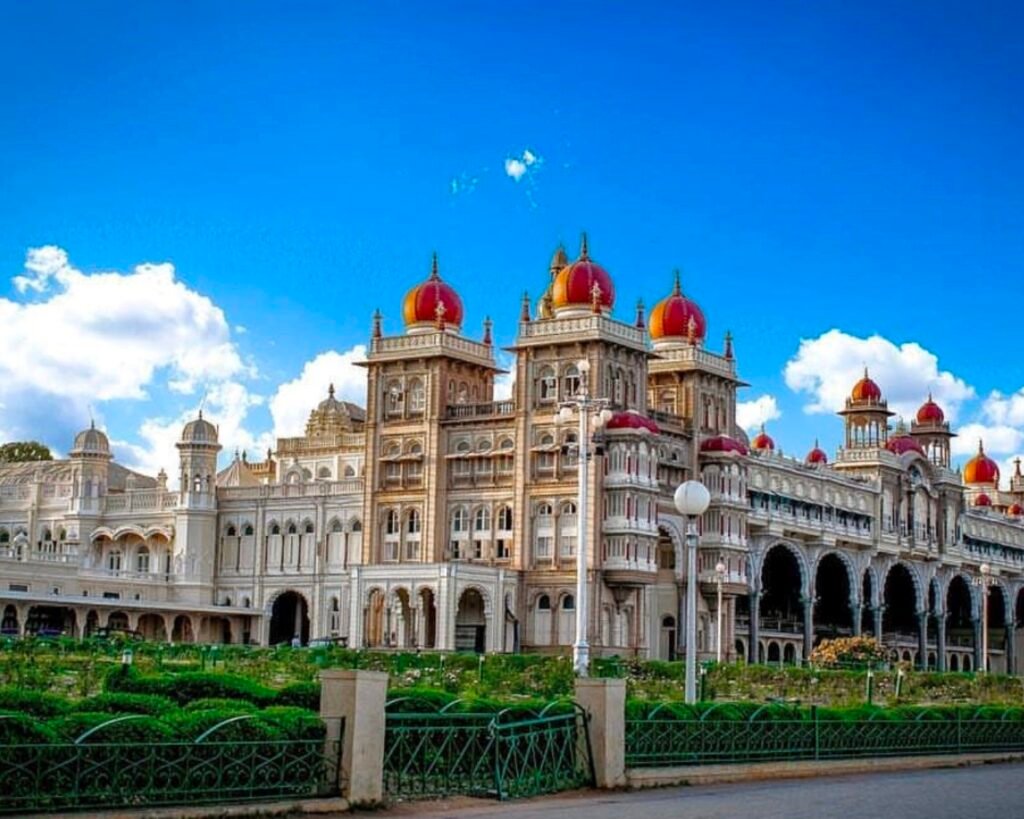 Ruled for above 500 years by the Wadiyar dynasty, the legacy of the royal City lives even to date. With remarkable architecture, clean streets, Tonga rides, historical museums, and art galleries, this city offers you a walkthrough their rich cultural heritage.
Ruled for above 500 years by the Wadiyar dynasty, the legacy of the royal City lives even to date. With remarkable architecture, clean streets, Tonga rides, historical museums, and art galleries, this city offers you a walkthrough their rich cultural heritage.
The most opted tourist attraction after the Taj Mahal is the infamous Mysore Palace, with an annual statistics saying that more than 6million people come by to experience the royal marvel.
Mysore is sure to leave you amazed by its monuments, markets and mouthwatering cuisine.
Attractions: Mysore Palace, St.Philomena’s Church, Mysore Zoo, Chamundi Hills, Folklore museum, Silk factory, Brindavan gardens
Interesting fact: While Mysore’s beauty will keep you captivated and make you forget about the virtual world of social media, it is the first city in India that was Wifi enabled.
71. South Bangalore
The Silicon Valley of India – Bangalore. One of the fastest-growing megacities, known for its balmy weather and wild nightlife.
The capital city of Karnataka, Bangalore is an emotion and this fact would be made quite clear through the sing-song of “Namma ooru Bengaluru”. Exploring Bangalore is a blend of adventure and serenity, and you can’t help but fall in love with the vibes.
Anything you’d want, the city would have it for you with a cherry on top. This is also why it is one of the most happening tourist spots in India and also home to the most traffic congestions in the world!
Attractions: Lalbagh botanical garden, Cubbon park, Nandi hills, Bannerghatta national park, Tipu Sultan’s summer palace, Dodda Aalada mara, Vidhana Soudha, Commercial Street
Interesting fact: The first electric street light that was lit in Asia, was in Bangalore. Powered by a hydroelectric station set up in Shivanasamudra, Bangalore holds this honor.
72. Hampi
This is the place that holds the glory to mamh infamous folk narrations such as Tenali Raman. Hampi- The renowned UNESCO World Heritage site is located in East-Central Karnataka.
The ancient capital ruins of the Vijayanagara empire spread over 4,100 hectares of splendor. Dating back to the 14th century, the architecture and relief are all carved out of stone.
A stroll across the authentic Dravidian style artifacts amidst the Tungabhadra river feels like having won the golden ticket!
Attractions: Matanga Hill, Vijaya Vithala temple, Elephant’s stable, Lotus Mahal, Hampi Bazaar, Hippie Island
Interesting fact: Get blessed by a baby elephant at Hampi! A playful little one would be going around the second tower in the Virupaksha temple, and they’d be more than happy to leave a kiss on your head as a blessing.
73. Shimoga
The fictional village around which RK Narayan’s Malgudi days was based on, was shot at Shimoga. That’s enough to picturise what Shimoga has to offer – the dreamy village from our childhood.
Lying across the Tunga River in Karnataka, the valley was officially renamed as Shivamogga which translates to “Face of Shiva”.
The valley is home to many infamous waterfalls, wildlife sanctuaries, and other natural spectacles. This is also why the villages of Shimoga are known as the Cherrapunji of the South.
Endowed with many rare and exotic species of birds and animals, it sure feels like walking through a mystical forest full of surprises.
Attractions: Jog Falls, Kodachadri, Agumbe, Dabbe falls, Keladi, Gudavi Bird Sanctuary, Sakrebailu Elephant Camp, Shivappa Nayaka Palace Museum, Nagara Fort
Interesting fact: The tallest untiered waterfall in India and 5th tallest in Asia – Jog falls, plunges from the dense forests of Shimoga
74. Badami
A masterpiece sculpted out of ancient red sandstone. Located in the Bagalkot district of North Karnataka, is the town of Badami (Vatapi). Formerly the Chalukyan Royal capital during the period of 540 AD to 757 AD, the town holds the same kind of royalty today.
Karnataka has always set the tone right for a walk through India’s age-old culture and craftsmanship. One of such examples of great historical and cultural importance is the town perched by the holy Agastya lake. A timeless Heritage centre.
The town looks beyond surreal with its eternal Dravidian architecture and ancient relief works.
Attractions: Badami Cave temples, Mallikarjuna group of temples, Agastya lake, Badami Fort, Archaeological Museum, Akka Tangi falls, Aihole, Ravana Pahad
Interesting fact: The most popular activity around here and undoubtedly the most exciting one is the free sport climbing and bouldering. Ascend the high sandstone cliffs to get an aerial view of the entire Badami town.
The various bolted routes around here come along with a reputation of being really safe and is often compared to the premier climbing areas of the Shawangunks in the West.
75. Karwar
Lesser explored beach destinations are always a gem to discover. For the very reason that they remain undisturbed by human activities and the show’s, it’s the natural pristine state.
Karwar, a beach city lying on the west coast of Kali river in Uttara Kannada.
Among the most beautifully laid Western Ghats, the city is surrounded by the sea and harbor. Karwar beaches are perfect for dolphin spotting, kayaking, and surfing.
The city is populated by a small number of people who preserve these surroundings and indulge in activities such as agriculture and fishing. It is also one of the greenest cities and is getting quite popular for its eco-tourism.
While spending time chilling at the beach and getting a dose of adventure, a day within the coastal lives is a fun thing to experience.
Attractions: Rabindranath Tagore beach, Devkar falls, Oyster Rock lighthouse, Warship museum, Kurumgad Island, Kali bridge, Sadashivgad fort
Interesting fact: It is said that the literary genius Rabindranath Tagore had gotten inspired by the beaches here and doted a few of his works.
76. Chikmagalur
Travelling for coffee wouldn’t seem like a wild idea once you take a sip of the Chikmagalur special coffee.
A hill station located in Karnataka, that’s said to have been presented as a gift to the daughter of the then chief. The name of the town also translates to “Land of the younger daughter” in Kannada.
Cascading waterfalls, highly protected wildlife parks, terrace plantations, clouded mountain peaks. Travelling to Chikmagalur, you’d understand why it was considered the most priceless and beautiful gift.
The trails are perfect for trekking, and the lands always seem to direct you either towards a warm cup of coffee or a spiritual space of worship.
Attractions: Mullayanagiri, Baba budangiri, Kalhatty waterfalls, Manikyadhara falls, Bhadra wildlife sanctuary, Kudremukh National park, Kodanda Ramaswamy temple, Kemmanguddi
Interesting fact: Chikmagalur localities take their coffee seriously and proving that fact is the coffee museum and the Central coffee research institute.
Picking the fresh beans to brew one of the finest experiences, these places take you through a demonstration right at the birthplace of coffee in India.
77. Dandeli
Here’s the town in Karnataka that’d get you all riled up with the array of adventure activities. Ruffling the peaceful subtropical region are watersports and adventure activities. Kayaking and white water rafting at the Kali river, one of a kind hikes to the Syntheri rocks, exotic wildlife spotting at the wildlife sanctuaries, and to be at peace by the end of the day, visit the temples and caves.
At 1551 ft above sea-level, Dandeli offers one of the steepest and exciting trails in the Western ghats.
Attractions: Kali river, Dandeli wildlife sanctuary, Kavala caves, Syntheri rocks, Shiroli peak, Anshi national park, Sykes point, Sathodi falls, Shivaji fort, Moulangi Eco-park
Interesting fact: Kavala caves are among the renowned natural caves created due to volcanic activity. Since it was not created by human activity per se, the cave openings are quite small and you might have to crawl through it to explore the limestone caves. It feels like a journey to no man’s land as you climb down the 375 stairs to witness the naturally formed stalagmite in the shape of a Shivalinga.
78. Gokarna
If there’s a place in the Western Ghats where time stands still, it would definitely be Gokarna. Located along the Konkan coastline, this refreshing beach land lies almost 50 km away from Goa. Cradled by the ocean, Gokarna beaches are a feast to the eyes.
Unlike the party beaches of Goa with the touristy hustle, Gokarna carries a rustic calmness to it which pulls it away from the chaotic crowds. It also sets itself aside from the familiar culture of Uttara Karnataka, making it one of its kind.
You wouldn’t notice the days going by with the perfect climate, fine grain beaches, amazing food, and the distinguished culture of Gokarna.
Attractions: Om Beach, Kudle beach, Lalguli falls, Half moon beach, Mirjam fort, Paradise beach, Nirvana beach, Murudeshwar temple
Interesting fact: Bioluminescent beach. Nirvana beach in Gokarna is said to contain phytoplanktons, which are visible at rare times (especially during a full/new moon). Even a sky filled with a million stars would be put to shame over the glistening galaxies created in the waters of Nirvana beach.
79. Belur
Banaras of the South. If there’s a place down South that shows exquisite craftsmanship and architecture, without a second thought the twin towns of Belur-Halebidu would top the list.
Located in Hassan district of Karnataka, is the enchanting town of Belur. Nestled on the banks of the Yagachi River, the town is almost always flooded by tourists.
One of the finest examples in Hoysala architecture, the erstwhile capital of the Hoysala Kingdom still remains one of the most fascinating structures.
Architecture and art that’s been created above 300 years ago remain the highlights of this rustic town and will surely leave you spellbound.
Attractions: Chennakesava temple, Yagachi river, Halebidu, Doddagaddavalli, Belavadi, Kedareswara Temple, Archaeological Museum, Hoysaleswara Temple
Interesting fact: The star-shaped structures are undoubtedly the trademark of Hoysala architecture. But Belur has taken it a notch up with a 42m high lamp post/pillar in the middle of the Belur temple courtyard. This structure stands with no foundation and solely on its own weight. Crowning it as the “Gravity pillar”.
80. Hogenekkal
How does a coracle ride through gushing waterfalls sound like?
One of the most exciting and thrill-inducing natural spots in the Tamil Nadu-Karnataka border is the Hogenakkal. Located in the offbeat district of Dharmapuri, the waterfalls are formed by the River Kaveri which flows gracefully from the Carbonatite rocks.
Dropping from above 15-65 ft., the falls are divided into 14 channels. Take one of the coracles and pass through all these channels and try out your swimming skills. Unless you’re an expert though, swimming in these challenging streams are not recommended.
For a lighter time, trekking can be conducted until the Mettur dam where the water converges.
Have a more localized experience try having some fresh fried fish from nearby eateries.
Attractions: Hogenakkal falls, Mettur dam, Melagiri hills, Pennagram village, Theerthamalai temple, Kottakovil
Interesting fact: The name Hogenakkal is inspired by the waterfalls in itself. Hoge and Kal mean smoke and rock in the Kannada language. It signifies the smoke effect emanating from the rocks due to the force of the water.
81. Bheemeshwari
Known exclusively for the unmatched fishing experience in South India. The town of Bheemeshwari is a small expanse of land next to River Kaveri, flowing through the Mandya district of Karnataka.
The town is also a perfect bird watching spot as several migratory avian populations, including the painted storks, flock down in huge numbers. It creates the perfect picnic spot and a perfect evening that’d not have even a single dull moment.
There’s also a good share of adrenaline-pumping activities in the form of Trekking, Zipline, River Crossing, Jumaring, Archery, Gun Shooting, and so on.
Attractions: Cauvery fishing camp, Doddamakali Nature camp, Boat rides, Kokrebellur, Trekking, Galibore fishing camp, Sangam, City shopping
Interesting fact: Abundance of Mahseer fishes (among the finest game fishes in the world) can be spotted here, and your catch for the day can be cooked and feasted upon.
You could just ask for it and someone would arrange a set up for preparing the fish on your own or even by localites.
Kerala
82. Kochi
Gateway to Kerala as many call it, Kochi is the Queen of the Arabian sea that lies bordering the Laccadive Sea.
The city’s quirkiness is infamous and has been highly influenced by several counterparts of Arabs, Dutch, Chinese Portuguese, and so on.
This can be easily spotted from the Chinese fishing nets traced across the waterfront to the harmonious blend of cultures around the lanes of Fort Kochi.
Whether exploring on foot, bus, ferries, or bicycles, you’re sure to be allured by the city’s charm.
Attractions: Fort Kochi, Jew town, Marine Drive, Cherai Beach, Hill palace museum, Folklore museum, Paradesi Synagogue
Interesting fact: “If China is where you make your money, then Cochin is surely the place to spend it”
These were the words of the Italian merchant/traveller Nicholas Conti. And sure enough, Kochi is the leisure land you’d not mind lavishly spending money over.
83. Wayanad
Literally translated as the “Land of paddy fields”, Wayanad is the enticing destination in the Western Ghats.
Located 76 km from the shores of Calicut, Wayanad’s high altitude remains home to a variety of flora and fauna.
It’s the most surprise packed package. From Caves and temples covered amidst deep forests protecting petroglyphs from the Neolithic ages to the terrace plantations that give tea leaves to be freshly brewed. It’s often also called the Ooty of Kerala due to its pleasant climate and scenic views.
There’s so much to feel and experience in this untouched hill station of Kerala!
Trace your path through the misty hills and be a guest of Kerala’s hospitality.
Attractions: Chembra Peak, Edakkal Cave, Wayanad wildlife Sanctuary, Pookode lake
Interesting fact: Fancy walking through a temple made of only mirrors? Wayanad is home to the only glass temple in Kerala – the Kannadi Ambalam. It is a Jain temple located in the Koottamunda district.
84. Thrissur
The cultural capital of God’s own country, Thrissur is a feast to travellers by all means.
Home to numerous majestic sights in Asia including one of the oldest Lord Shiva temple, a grand palace artistically culminated by Raja Ravi Varma, gushing waterfalls including the very own “Niagara falls of India” and so much more.
Thrissur lying in the heart of Kerala is sure to capture your heart by its unforgettable views and memories.
Attractions: Vadakkunathan temple, Athirapilly waterfalls, Shakthan Thampuran Palace, Punnathur Kotha, Chavakkad beach, Thekkinkaadu Maidan
Interesting fact: Thrissur Pooram is a festival held at the Vadakkunathan temple annually. Many people from the state and within the country anticipate for the colourful celebrations. From the display of caparisoned elephants, percussion music and a blast of vivid colours, the Pooram is considered one of the greatest gatherings in Asia.
85. Varkala
If there was a localized version of Goa available in God’s own country, it’d be Varkala.
A Beachland sunkissed through palms and red cliffs. Many people come by here to watch the beautiful sunset while having some fresh fish cooked in the local Kerala style.
Varkala is also an important pilgrimage spot. The beach is also locally known as Papanasam beach which means “destruction of sins”. Not farther away from the beach is the Varkala temple which is said to be built above 2000 years.
There are also Gondola rides across the Varkala tunnel that’d take you through the trade routes of the 17th-18th centuries.
It’s the perfect spot to escape from the maddening crowds and roam around like a hippie soul. Nuzzle in the golden sands with the salty breeze from the Arabian Sea, it’ll be a memory that’d never erase from the traveller diaries.
Attractions: Varkala beach, Varkala cliff, Kappil lake, Janardhanaswamy temple, Ponnumthuruthu Island, Varkala lighthouse, Anchuthengu fort, Varkala tunnel
Interesting fact: The only place in Kerala where cliffs are found adjacent to the Arabian sea. This unique geological feature is a complete contrast to the otherwise flatter sediments of Kerala’s coastal region. The phenomenon is known as the “Varkala formation” and is declared as a geological monument by the Geological Survey of India.
86. Iddukki
Idukki district is a densely forested region in Kerala that’d welcome you with the strong aroma of rich cardamom and tea.
Apart from the infamous tea plantations covering Idukki, the hills are blessed with national parks, dams, wildlife reserves, and many clear rivers.
The hill station is a major source of power generation for the State. Around 66% of the state’s electricity is generated from the Idukki hydroelectric power projects.
Even though quite large in area, the population is less, due to which many of the natural resources remain untouched.
With high altitude mountain treks, playful elephant rides stroll across spice and tea plantations, and many such thrilling activities, Idukki is the backpacker’s treasure.
Attractions: Idukki wildlife sanctuary, Arch dam, Calvary Mount, Painavu, Ilaveezha Poonchira, Rammakkalmedu, Thommankuthu Waterfalls, Ayyapancoil Hanging bridge
Interesting fact: The Eravikulam National Park is known for the breath-taking blue Neelakurinji flower fields. The rare flower that blooms gregariously every 12 years, is a sight many people eagerly wait to witness.
At close proximity from the park is the highest peak in the Western Ghats – Anamudi.
87. Kumarakom
The village that made the dream of living amidst the waters a reality. Kumarakom, a village on Vembanad Lake of Kerala, is patched with canals and houseboats along the line of backwaters.
It’s a haven for migratory birds, and for all those looking for a getaway from the cacophony of the cities. Apart from the chirping of the birds, effortless waves of the water, and the occasional chatter from houseboats, there is absolute peace in the stillness of this town.
It also comes along with many pleasant activities such as Boating, angling, trekking, fishing, and so on.
This cluster of islands is sure to entice you and keep you coming back to the other-worldly like lakes and rivulets.
Attractions: Kumarakom Bird Sanctuary, Aruvikkuzhi Waterfall, Vembanad Lake, Kumarakom Beach, Kumarakom Backwaters, Bay Island Driftwood Museum, Kumarakom Craft Museum, Pathiramanal Island
Interesting fact: Contrasting to the calmness is the once in a while boat races. The thrilling races with the long iruttukuthi and snake boats, hundreds and thousands of oarmen, accompanied by the traditional boat song (vanjipaatu).
The two frequently occurring races in Kumarakom are the Kavanattinkara and Kumarakom boat races.
88. Gavi
A silent little village perched at 3,400 ft, in Pathanamthitta district of Kerala. Well connected via the highway, Gavi is a gem that remains unexplored by many.
Spread across the Periyar tiger reserve, the village is enveloped in misty forests and dewy grass on your feet.
As it is a part of the reserve, a casual walk around the forests offers to spot of rich wildlife including tigers, elephants, leopards, Indian gaur, sambar, lion-tailed macaque, and so on.
Accompanying you here would be a mirage of clouds and the meager amount of sun shining through it.
This is every nature lover’s paradise and a must-visit spot in India.
Attractions: Camping, Pamba reservoir, Tea plantations, Thekkady, Peermade, Kuttikanam, Sabarimala view-point, Trekking, Boating, Anghamoozhy
Interesting fact: Gavi became a known name after Alistair International (World acclaimed tourism major) listed it among the leading eco-tourism centres and one of the must-see places in India.
Tamil Nadu
89. Pondicherry
If there were colours to town, Yellow would be Pondicherry. The happy colour.
Munching onto croissants fresh out of the oven and sipping onto a warm cup of caffeine with a view of the windy beaches. This is what Pondicherry is all about, everything fun and relaxing. A paradise for the beach bums. Added with this are carefree rides across mustard coloured buildings with French titles and designs.
The town lies in the borders of Tamil Nadu are known for their French colonial settlements. The French legacy lives even till date with the chic nature of the town.
The French Riviera of the East are
Attractions: Paradise beach, Sri Aurobindo Ashram, Seaside Promenade, The sacred heart Basilica, Pondicherry lighthouse
Interesting fact: The beach destination comes with the most tempting combo of fresh fish and cheap liquor. The tax on alcohol is very low, sometimes almost like half the tax with which it’s sold around the country.
Enjoy the raw Pondicherry with a chilled drink and some warm fish on your plate.
90. Chennai
Chennai people take immense pride in their city and for all the right reasons. The capital city of Tamil Nadu is a combination of everything you’d look out for lively city life. Pompous nightlife, beaches to relax, thrilling adventures for the restless soul, luxurious malls, British structures with a contemporary touch to it, historical statues across the longest beach of Asia and so much more.
Chennai is mostly known for being home to the second longest beach in the world – the Marina beach. Apart from the long stretch of grainy sands and foams of beach water, there are many more tales hidden in Chennai.
Explore every bit of this treasured momentous city.
Attractions: Marina Beach, Kapaleeshwar Temple, Vandalur zoo, Beasant beach, Broken bridge, Marina lighthouse, T-Nagar bazaar
Interesting fact: Located in Chennai is India’s first and largest Zoo – Arignar Anna Zoo or the commonly known Vandalur Zoo.
Expanding over 600 hectares with an additional 92hectare rescue and rehab centre, it’d take almost half a day if you’d want to explore every nook and corner of the zoo.
With multiple sections and above 2000 species of flora and fauna, the zoo is a complete visual treat.
91. Mahabalipuram
The ancient rustic town is a strip of land in Tamil Nadu between the Bay of Bengal and the Great Salt Lake. Fondly known as Mamallapuram, the monuments and monolithic structures are said to be built during the Pallava dynasty.
Home to some majestic temple architecture, the town is the perfect blend of art, culture, mythology and adventure.
The town’s beauty is said to have made even Lord Indra green-eyed, who ended up sinking the heavenly city in a storm.
So be ready to be left awestruck by this historical magnificence.
Attractions: Shore temple, Mahabalipuram lighthouse, PanchaRathas, Arjuna’s penance, Krishna’s butterball, India seashell museum
Interesting fact: Mahabalipuram gives you an adventure like no other. Known as the town of seven pagodas, there’s only one standing tall – Shore temple. The rest of the temples are said to be submerged in the sea, which you can go around exploring in a catamaran ride.
Most of them are submerged in the deep sea, so bet on your luck for finding the six temples.
92. Ooty
Colonial times summer retreat and the backpacker’s paradise is the Queen of hill stations.
Udagamandalam or better known as Ooty is an enchanting town in the Nilgiris district of Tamil Nadu.
Starting from the 55 acres Botanical garden built during the late 1840s to a walk through the Cairn hill accompanied by the migratory birds. There’s not a single dull moment in Ooty.
Rich with its vast flora and fauna, the mystical canopies are sure to sweep you off your feet.
Ooty still remains an undisturbed beauty, least bothered by the modernity and influx of tourists.
Attractions: Ooty lake, Rose garden, Moyar River, Kalhatty Waterfalls, Mudumalai park, Doddabetta peak, Pine forests
Interesting fact: You can race with the train here and still win. The Nilgiri Mountain railway is the slowest train in India, running at an average of 10kmph.
Bellowing off steam, the train passes through 13 stations. So slow down and savor Ooty’s beauty, precisely at 10 kmph.
93. Yercaud
A lesser-known hill station, that’s often compared to the queen of hill stations Ooty. Yercaud lies in the Shevaroy Hills with its tiers of plantations, boathouses lined across the lake, Japanese influences gardens and bonsais, and vantage points overlooking the entire town.
Due to its affordability, it’s also called the “Poor man’s Ooty”. Yercaud literally translates to “Lake forest”, signifying it’s thick vegetation surrounded by the enthralling lake.
Yercaud also gives amazing culinary experience in terms of South Indian cuisine. That too prepared with freshly picked spices and coffee from the gardens.
Attractions: Emerald Lake, Deer Park, 32-KM Loop Road, Pagoda Point, Tipperary View Point, Lady’s Seat, Killiyur Falls, Bear’s Cave, Rose Garden, Kottachedu Teak Forest, Anna Park, Botanical Garden, Norton’s Bungalow, Shevaroy Hills, Karadiyur View Point, Silk Farm, Orchidarium
Interesting fact: Bears cave is one of the interesting points around Yercaud and is said to have been created and homed bears. It got its name after the discovery of above 140 bear skeletons which are preserved and exhibited here with utmost caution.
These cave bears are a species that is said to have gone extinct during the Last Glacial Maximum, about 27,500 years ago.
94. Kodaikanal
Kodaikanal is a hill town in the southern Indian state of Tamil Nadu. It’s set in an area of granite cliffs, forested valleys, lakes, waterfalls, and grassy hills. At 2,000 meters above sea level, the town centres around man-made, star-shaped Kodaikanal Lake, bordered by evergreen forest. Rowing boats can be hired, and hikers and cyclists follow the 5k Lake Road path around the shore.
Centered around the man-made marvel that is the Kodaikanal Lake, the hill station is encompassed by the endless charm of nature and is filled to the brim with interesting and breathtaking tourist spots that are simply waiting to be explored
Attractions: Kodaikanal Lake, Dolphins nose, Night Safari, caps valley viewpoint, Guna caves, Thalaiyar Falls
Interesting fact: Kurinji is the name of the flower that is one of a kind and can be found growing in The Kodai Lake. This one does not grow each year but once in every twelve years. If you have the luck on your side then you might end up in Kodaikanal in the Kurinji year.
Nilgiri Hills, which literally means the blue mountains, got their name from the purplish-blue flowers of Neelakurinji that blossoms only once in 12 years.
95. Theni
True to its name which translates to “Honey/Nectar” in Tamil, Theni will remain a sweet memory to those who explore it.
Situated in Southern Tamil Nadu, it’s a major tourist attraction with the dams, waterfalls, fields, and pilgrim centers.
It’s home to many untouched rivers such as the Vaigai, Kottagudi, Suruliyar, Manjalar, and so on.
Pleasant climate throughout the year, strips of paddy, cotton, and tea growing in the rich soil, crystal clear rivers and creeks flowing across them. If Earth’s hidden paradise is the phrase, Theni is the meaning of it.
Such was the beauty that it even inspired the distinguished music maestro of South India – Illayaraja, who hails from this beautiful hill station.
Attractions: Meghamalai, Surili falls, Bodhinayakannur, Kurangani, Meghamalai wildlife sanctuary, Kumbakkarai falls, Seran’s fun park, Top station viewpoint
Interesting fact: Theni is South India’s fourth-largest weekly market with its large-scale trading of garlic, cotton, cardamom, grapes, and other materials.
96. Yelagiri
Tamil Nadu is the place to go to if you want to spend some quality time at hill stations that aren’t much crowded. Four mountains and 14 tiny hamlets spread across it in the most welcoming manner.
Yelagiri is a valley that looks straight out of a fairytale. Temples built at the highest points with an aerial panoramic view of the entire hill station. Dive from the waterfalls to splash into the swimming pit right below it. Follow trails to the forests that look like they were enchanted by fairies.
The surrealness of untouched spots like Yelagiri goes beyond words could describe.
Attractions: Punganoor Lake park, Jalagamparai waterfalls, Telescope observatory, Amirthi Zoological waterfalls, Swamimalai, Government herbal farm, Nilavoor lake, Yelagiri adventure camp, Forest hill
Interesting fact: Watch the Musical Fountain show that takes place in the Herbal Farm. Offering a beautiful sunset view followed by the musical lights lighting up the farm. Its a really beautiful and innovative way to keep the audience entertained and engaged.
97. Kanyakumari
The southern end of India is home to the coastal town of Kanyakumari. Formerly known as Cape Comorin during the British rule, it was one among the favorite spots of the colonizers to watch the sunset.
It’s the only place in India where one can witness the sunrise, sunset, and moonrise from the same place. The three beautiful water bodies – the Indian Ocean, Bay of Bengal and Arabian sea converge here making the views even prettier. The Triveni Sangam can be separated visibly as each water body is a different shade of blue.
Get on top of the Lighthouse to get the spellbinding aerial view of the sunrise and sunset. Complimented with the pattern created by the multicolored sands of the beaches brought in by the three oceans.
You’d want to witness the sunset here every day and that’s guaranteed.
Attractions: Vivekananda Rock Memorial, Thiruvalluvar statue, Gandhi Mandapam, Kanyakumari beach, Kanyakumari temple, Thirparappu falls, Vattakottai fort
Interesting fact: Kanyakumari being an important pilgrimage site, there are several interesting stories revolving around the Kanya Devi. The nose ring that she dons is said to be made of the brightest set of rubies that you could see it shine from miles away.
Myth has it that ships that were sailing around Kanyakumari were rerouted mistaking the brilliance of the rubies for the light that would shine from the lighthouse.
98. Neil Island
Fan of the deep waters and fine sand beaches? If not, this place is definitely going to change your mind.
One among the islands at Andaman in the Bay of Bengal, Neil Islands is a view that’ll remain etched in your mind for several reasons.
Infamously known as the Vegetable bowl of the Andaman Islands, the place is perfect for the cultivation of many fruits and vegetables. The credits to this go to its climatic conditions which do not vary much from its scale of being pleasant throughout.
The tropical islands also have a range of exotic coral reefs freckled in its 13.7sq kilometer area.
Attractions: Natural coral bridge, snorkeling, glass-bottom boat ride, trekking, bicycling.
Interesting fact: We all carry a piece of Andaman within our pockets. The old 20 rupee note is printed with an image of the beautiful palm cocooned islands of Andaman.
100. Havelock Islands
At close proximity from Port Blair in the Andamans are the Havelock islands. A part of Ritchie’s Archipelago, the islands are laid with white fine sands and turquoise waters.
Havelock is a place where you’re sure to get as close as you could with nature. Most of the journey around here is done on foot, bikes, or wooden boats. Especially through the dense mangroves, one can go kayaking until they reach the open sea.
A hike through with tropical forests, long strips of paddy fields, diving into clear seabeds embedded with coral reefs, and much much more. The secluded beaches of Havelock are perfect for watching the sunset and sunrise.
It’s a must-visit place to drift away into the long stretch of mysteriously beautiful land.
Attractions: Neil island, Radhanagar beach, Barren island, Elephant beach, Long Island, Bharatpur beach, Kala Patthar Beach, Guitar island beach
Interesting fact: The only known active volcano in entire South Asia is Barren Island. It’s a 1.6 km wide crater that has been the source of several eruptions and can be accessed through the Havelock islands.


